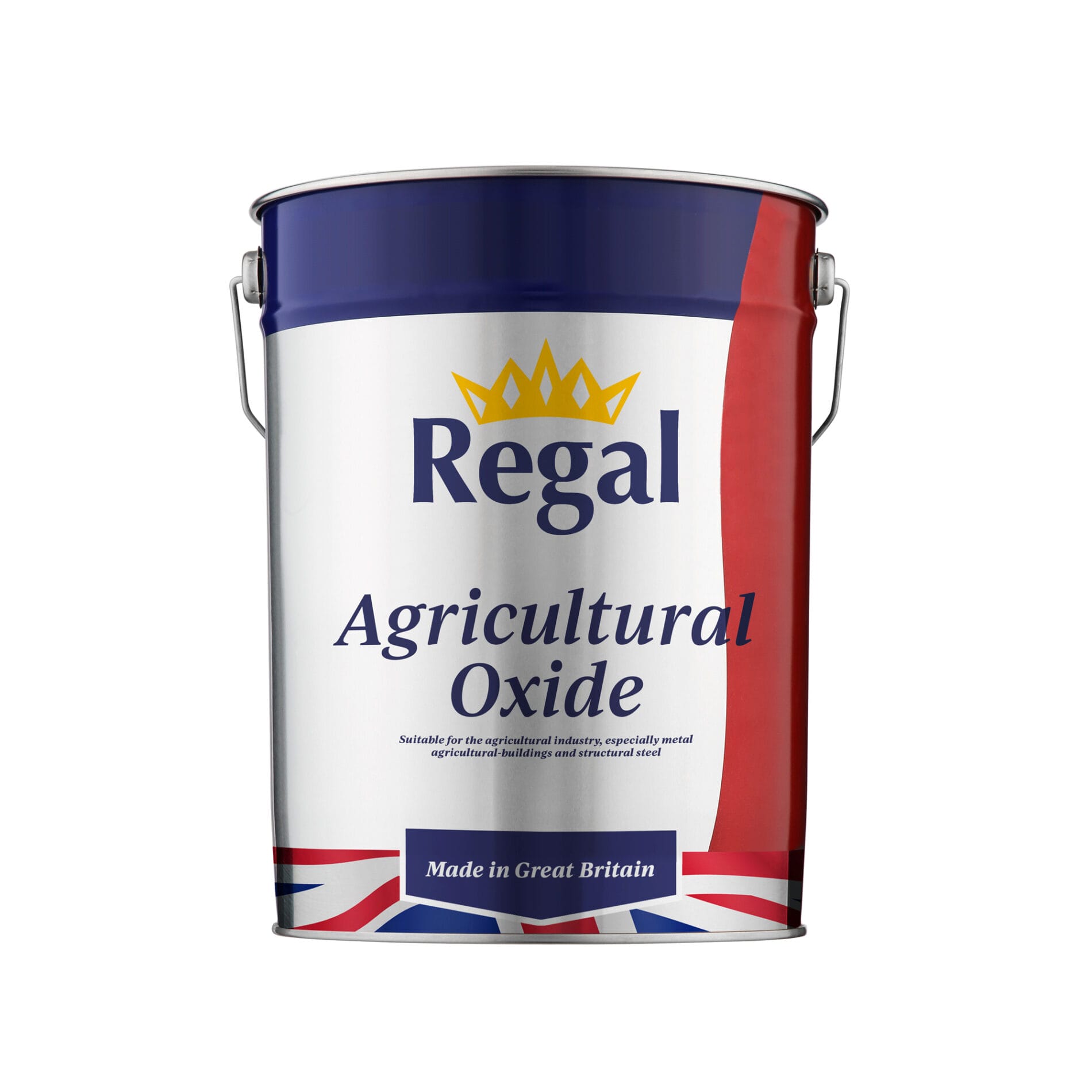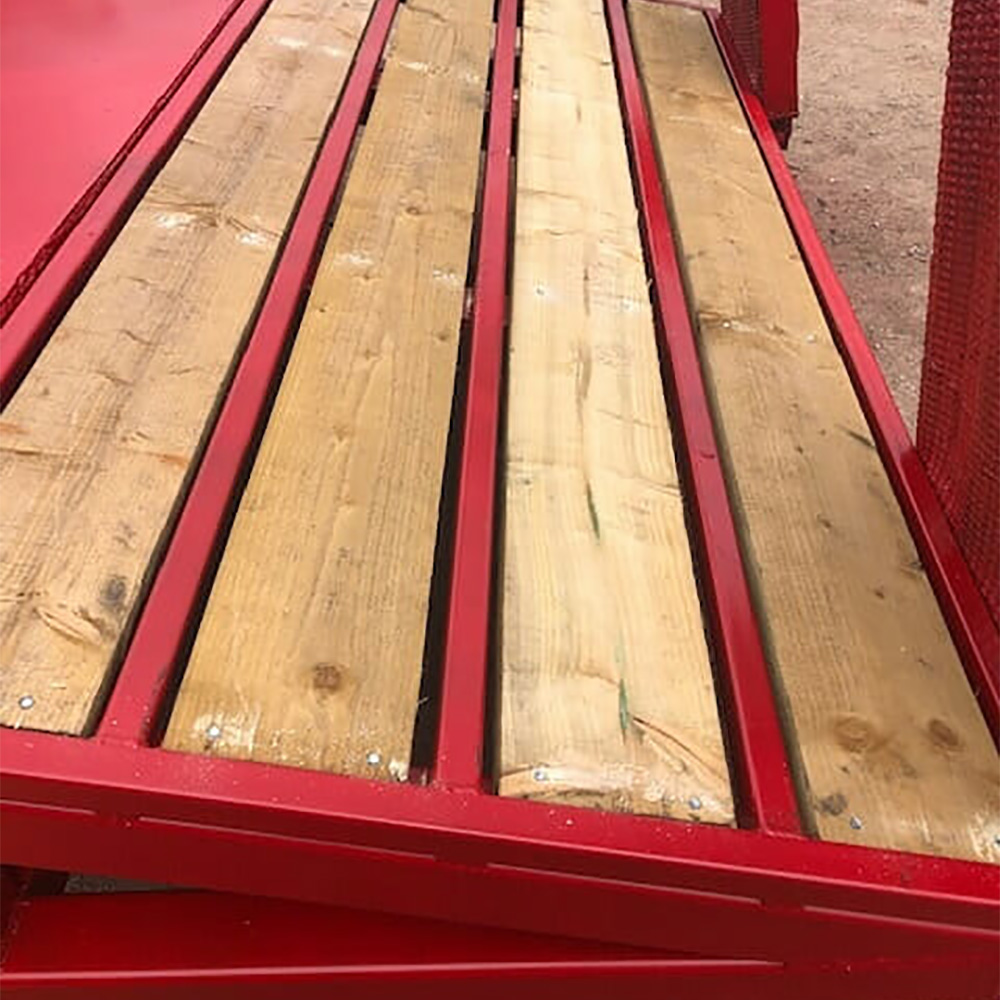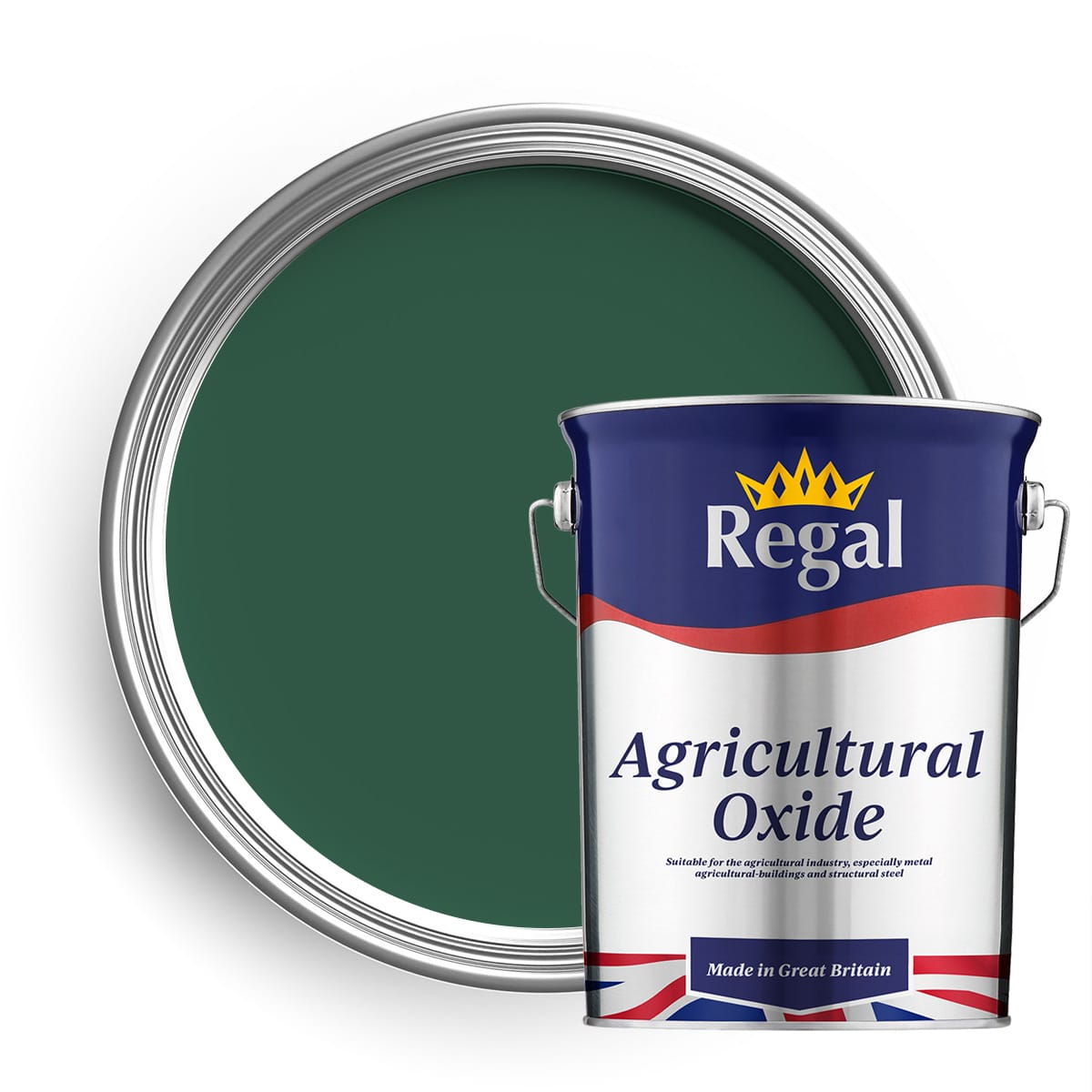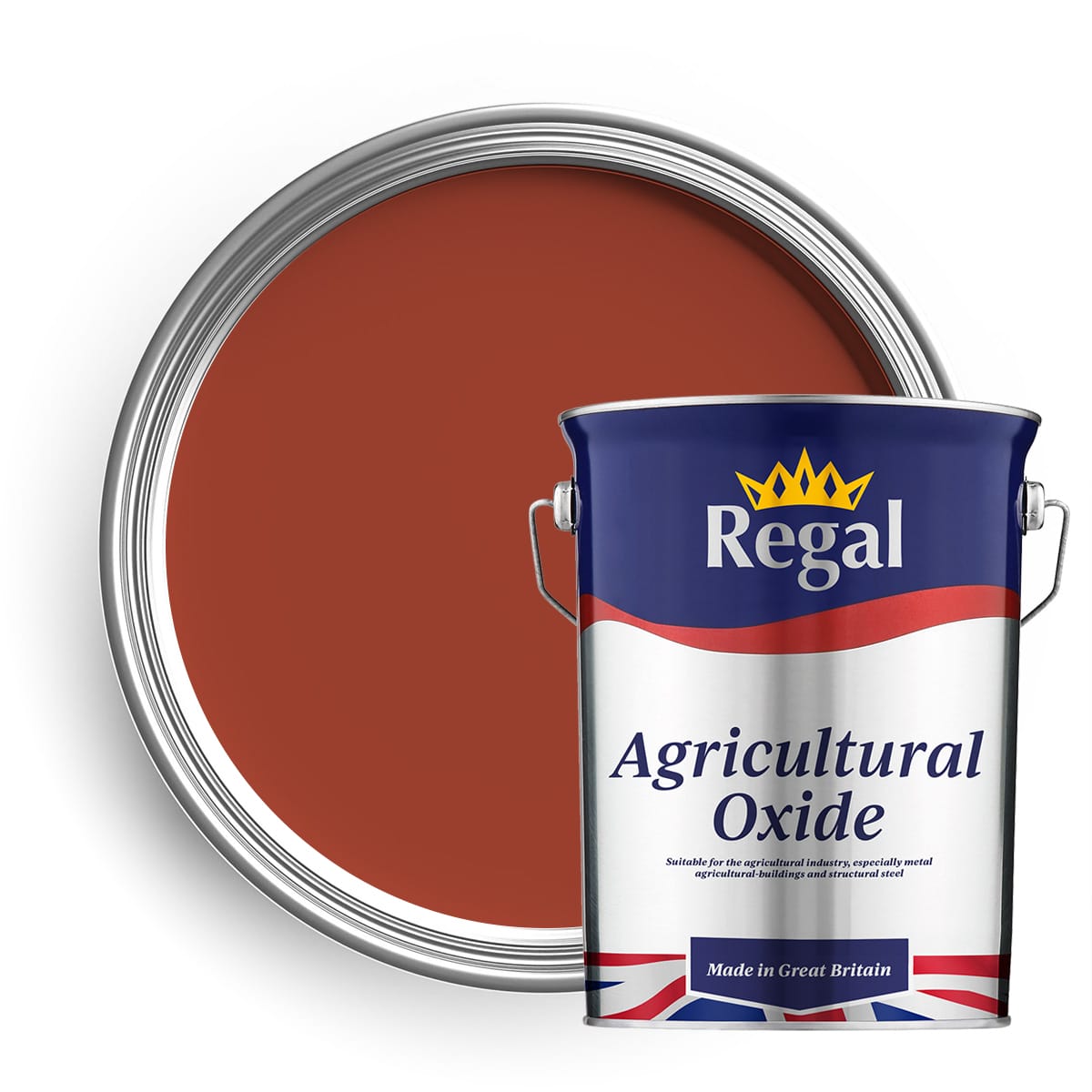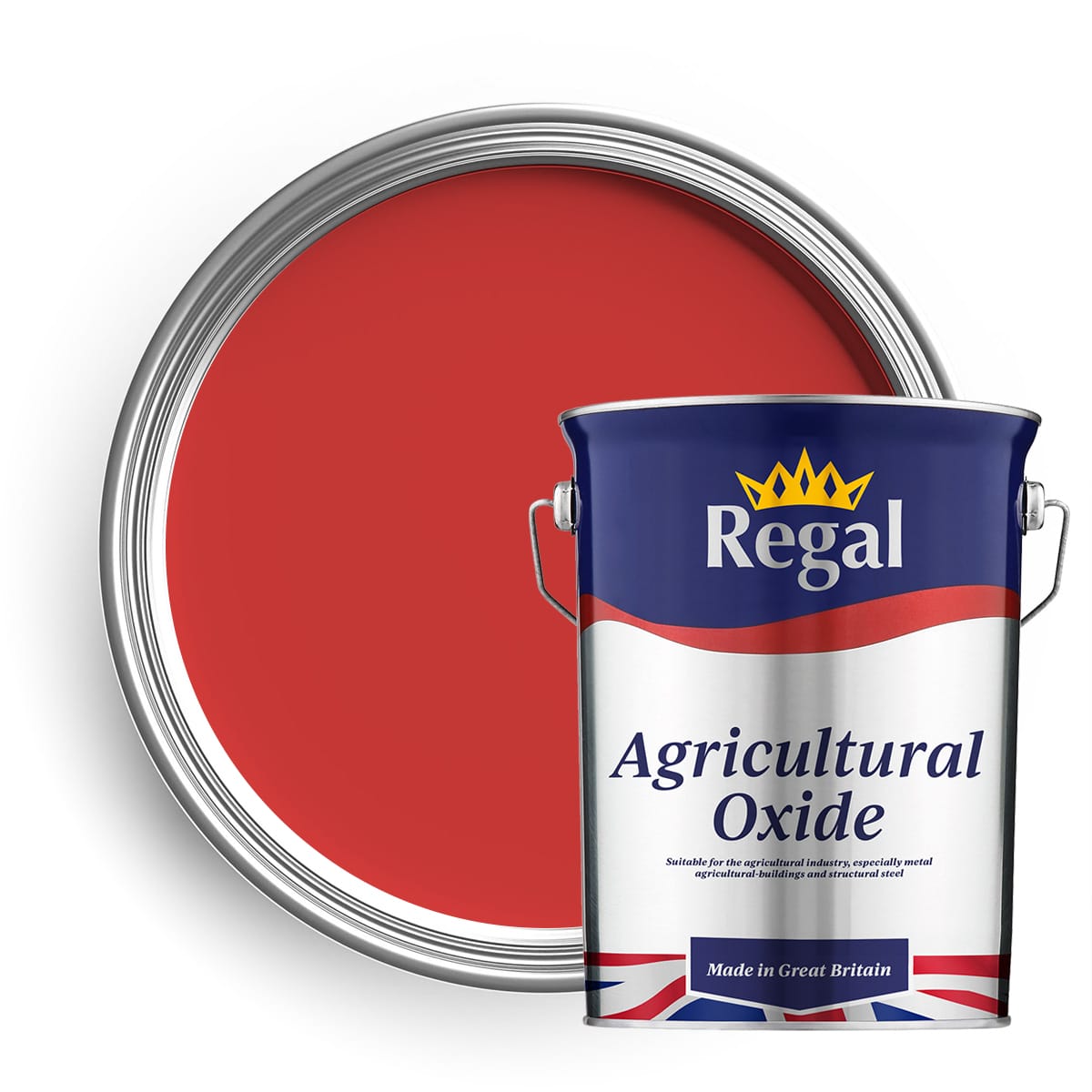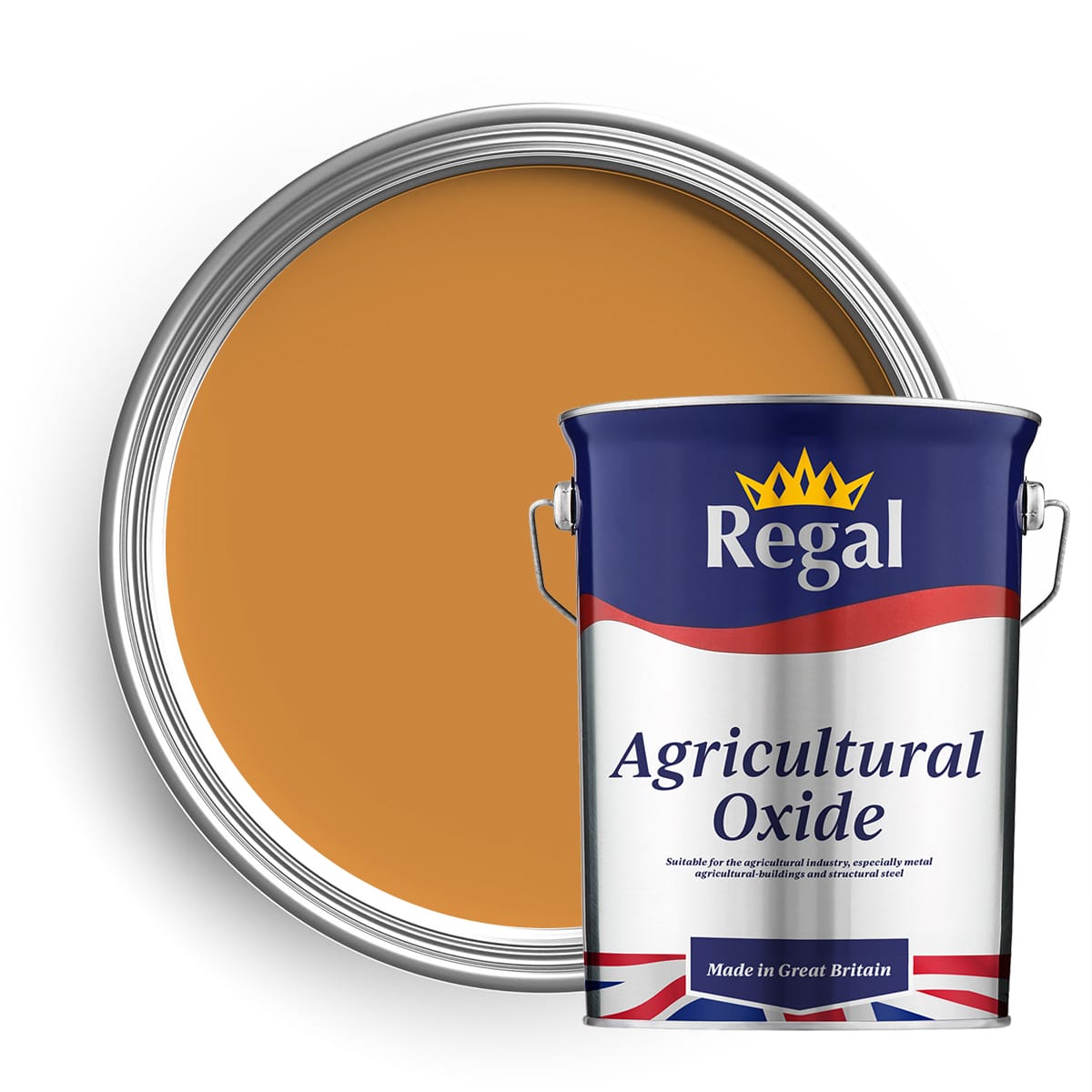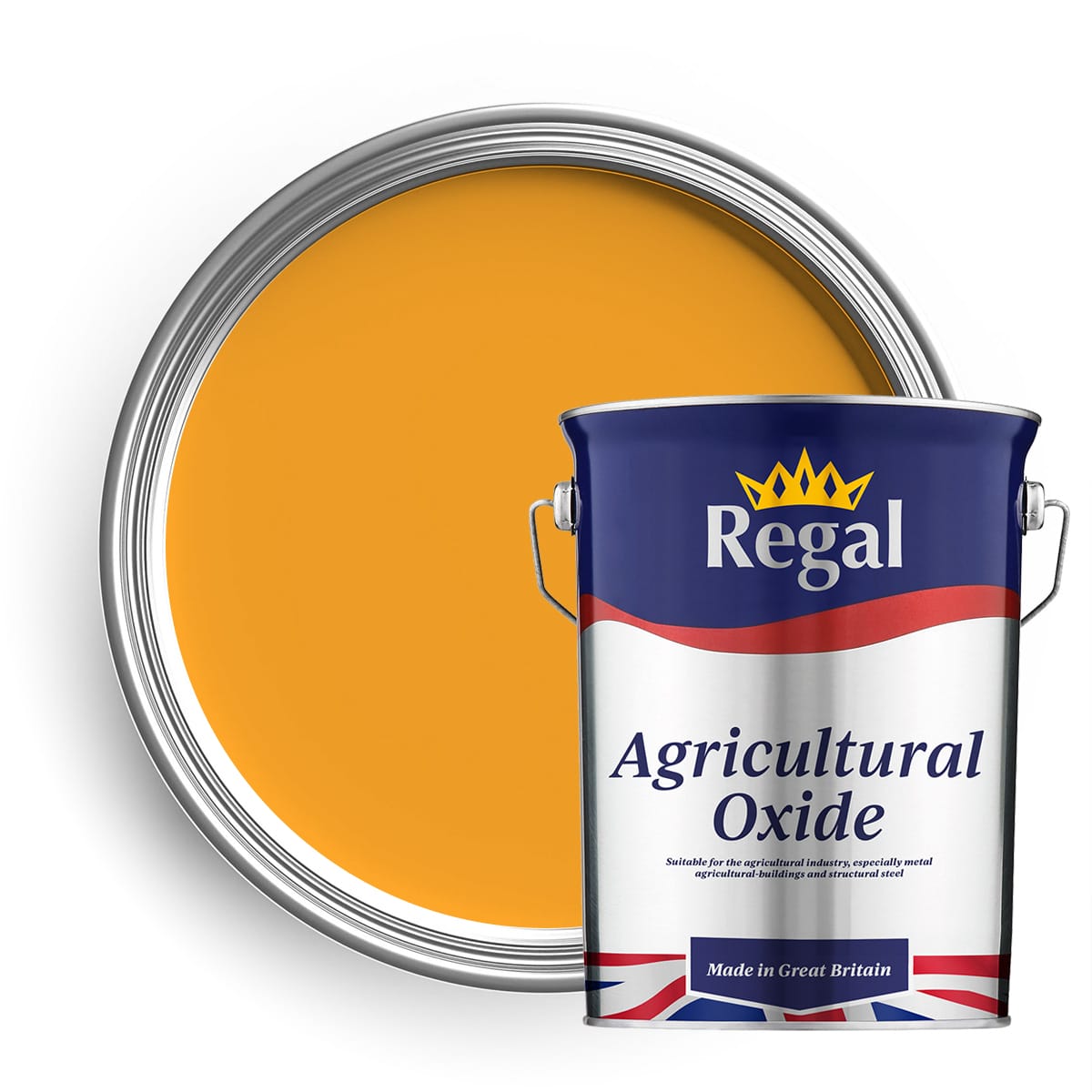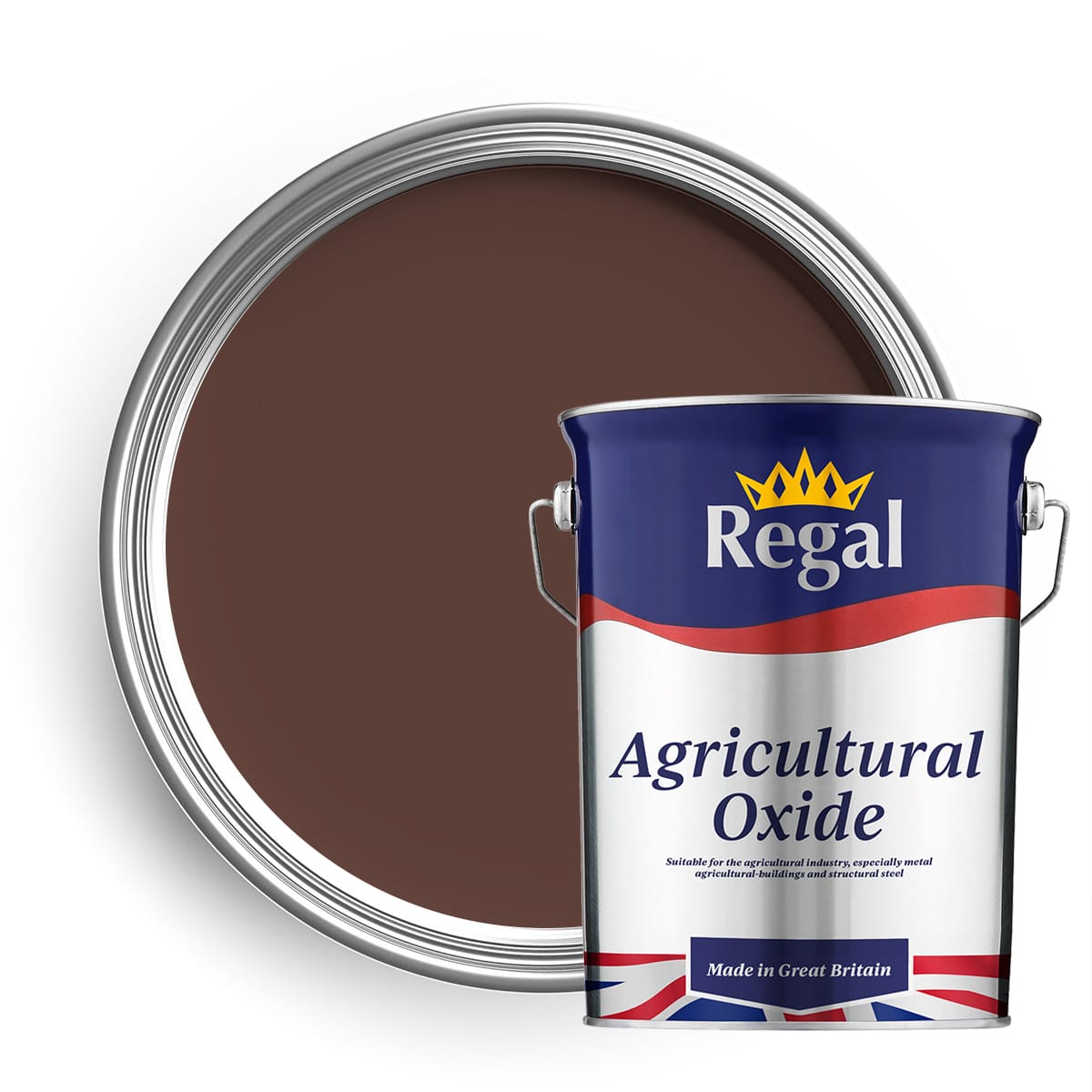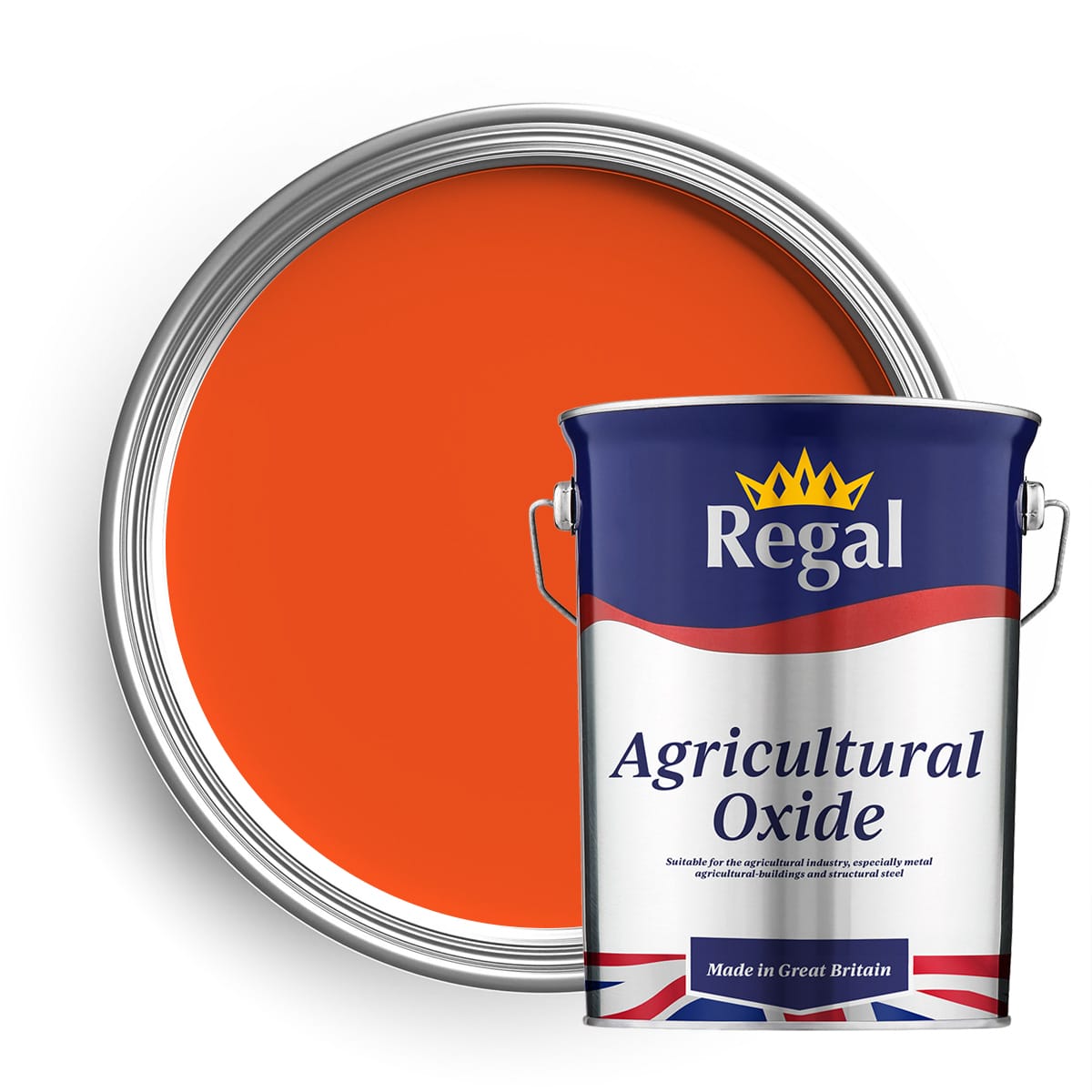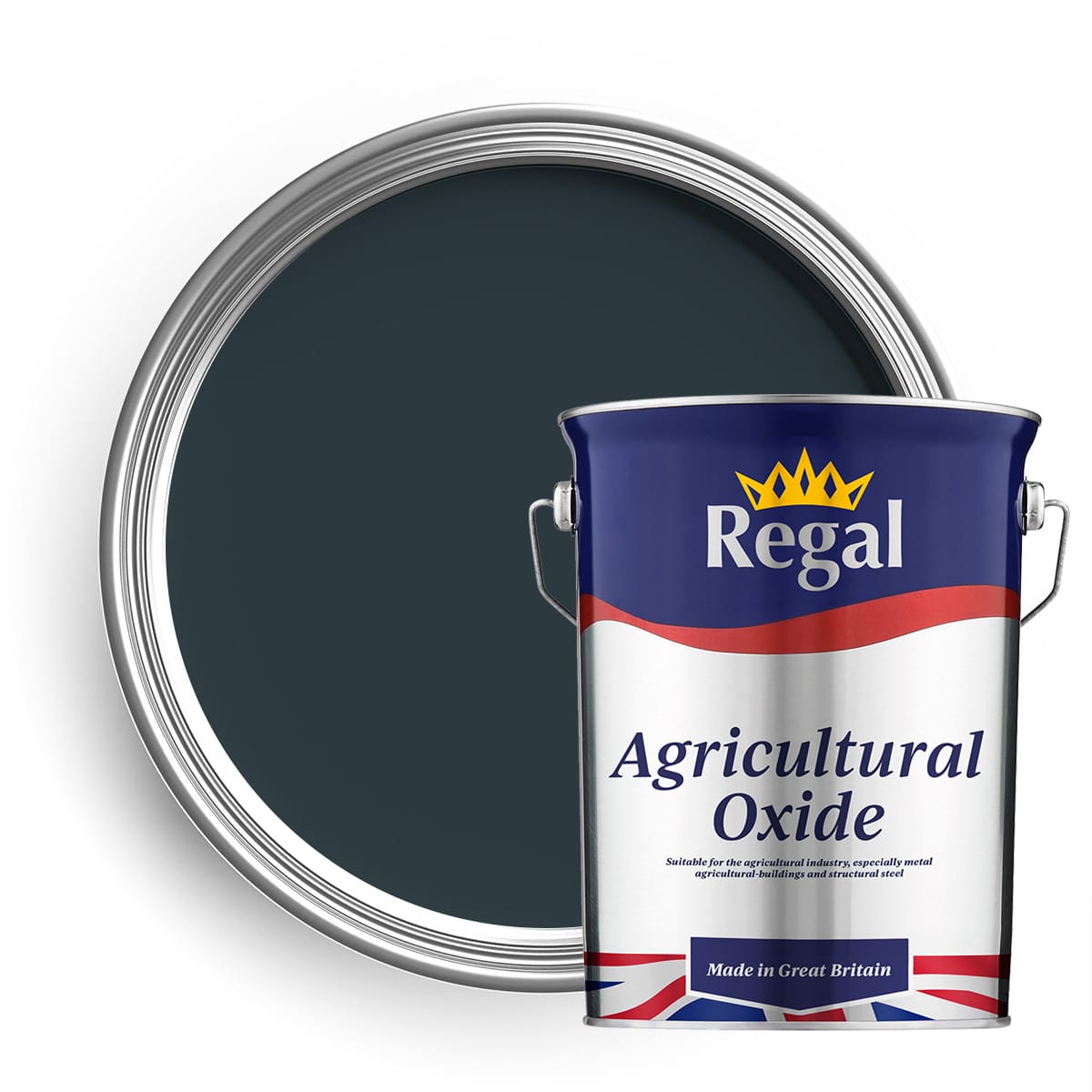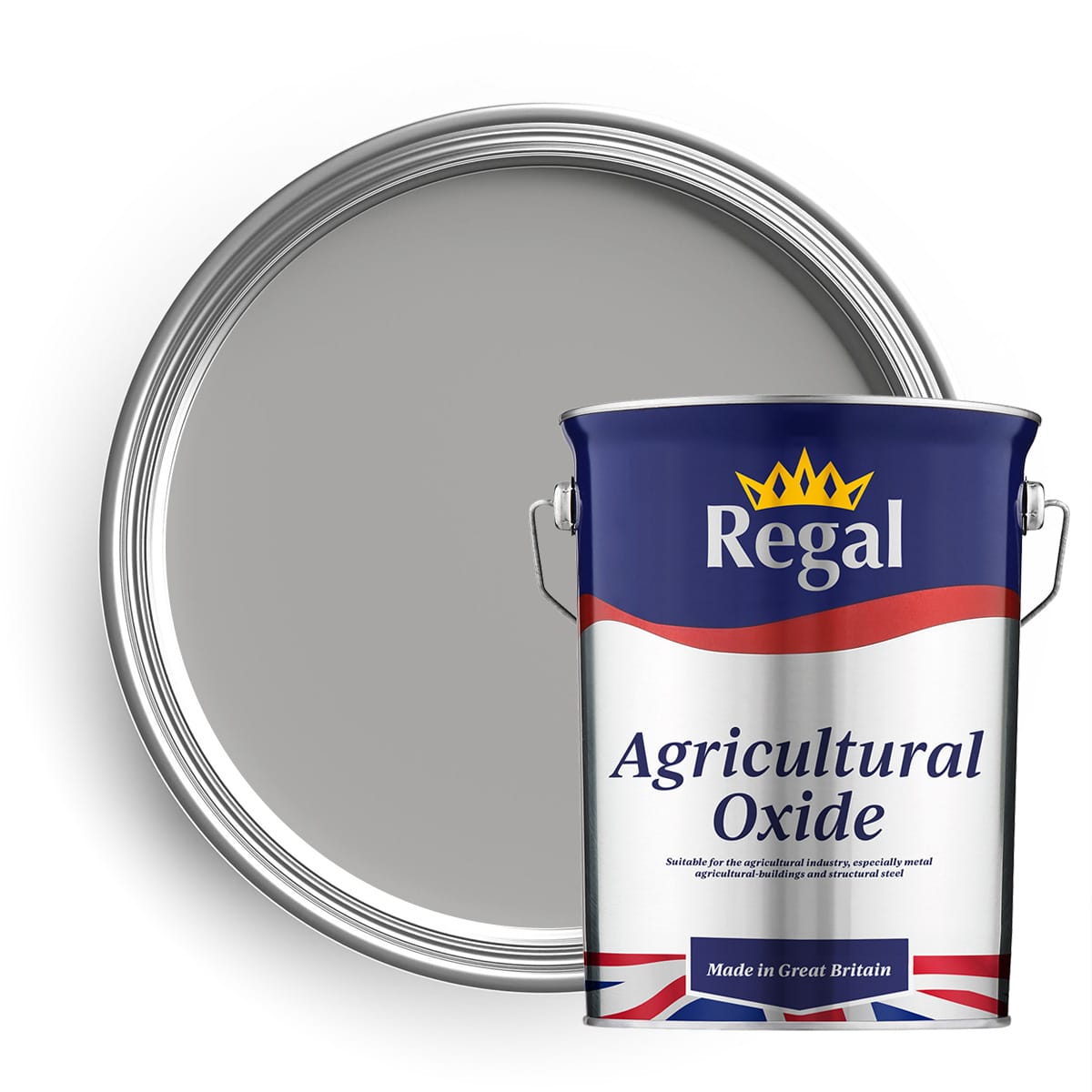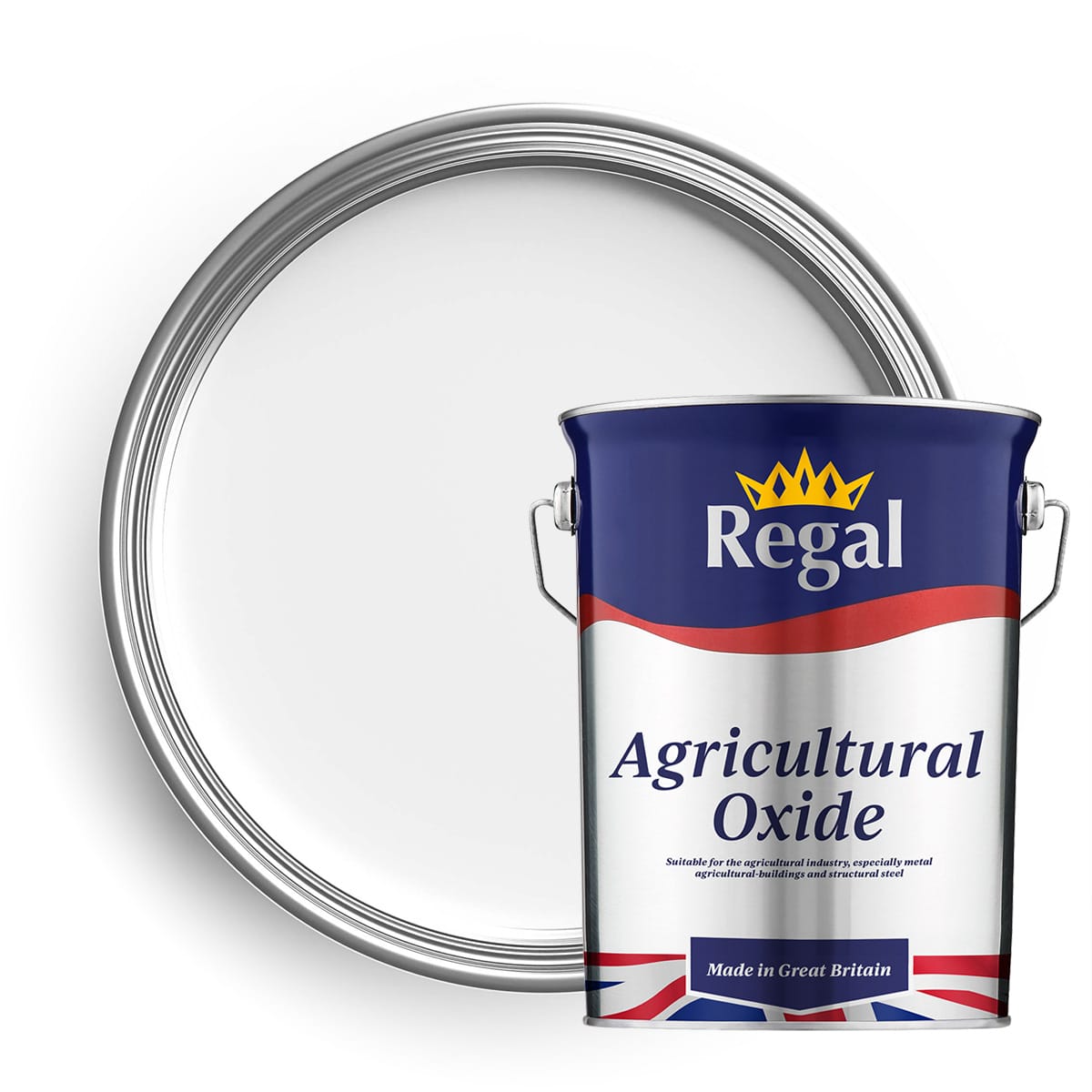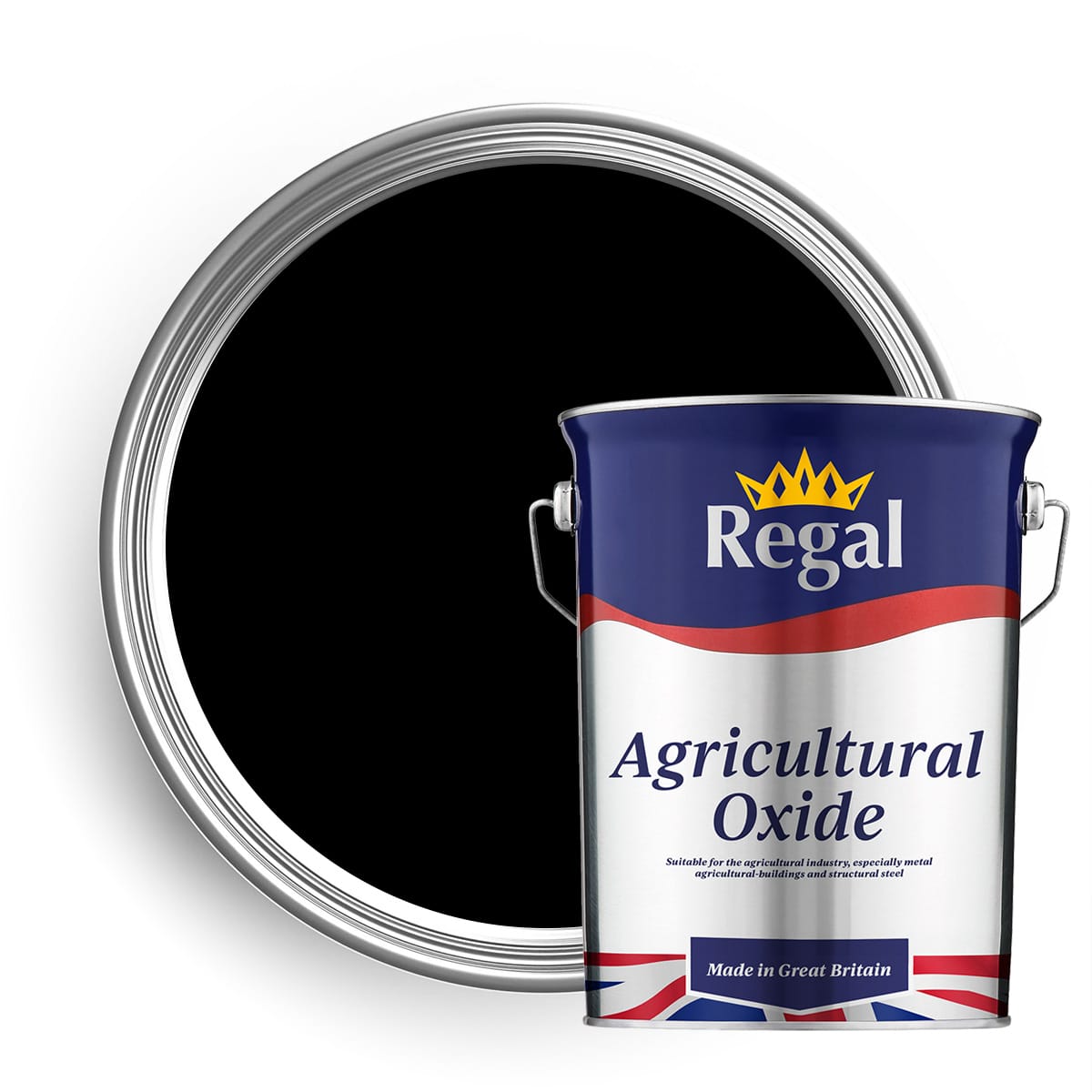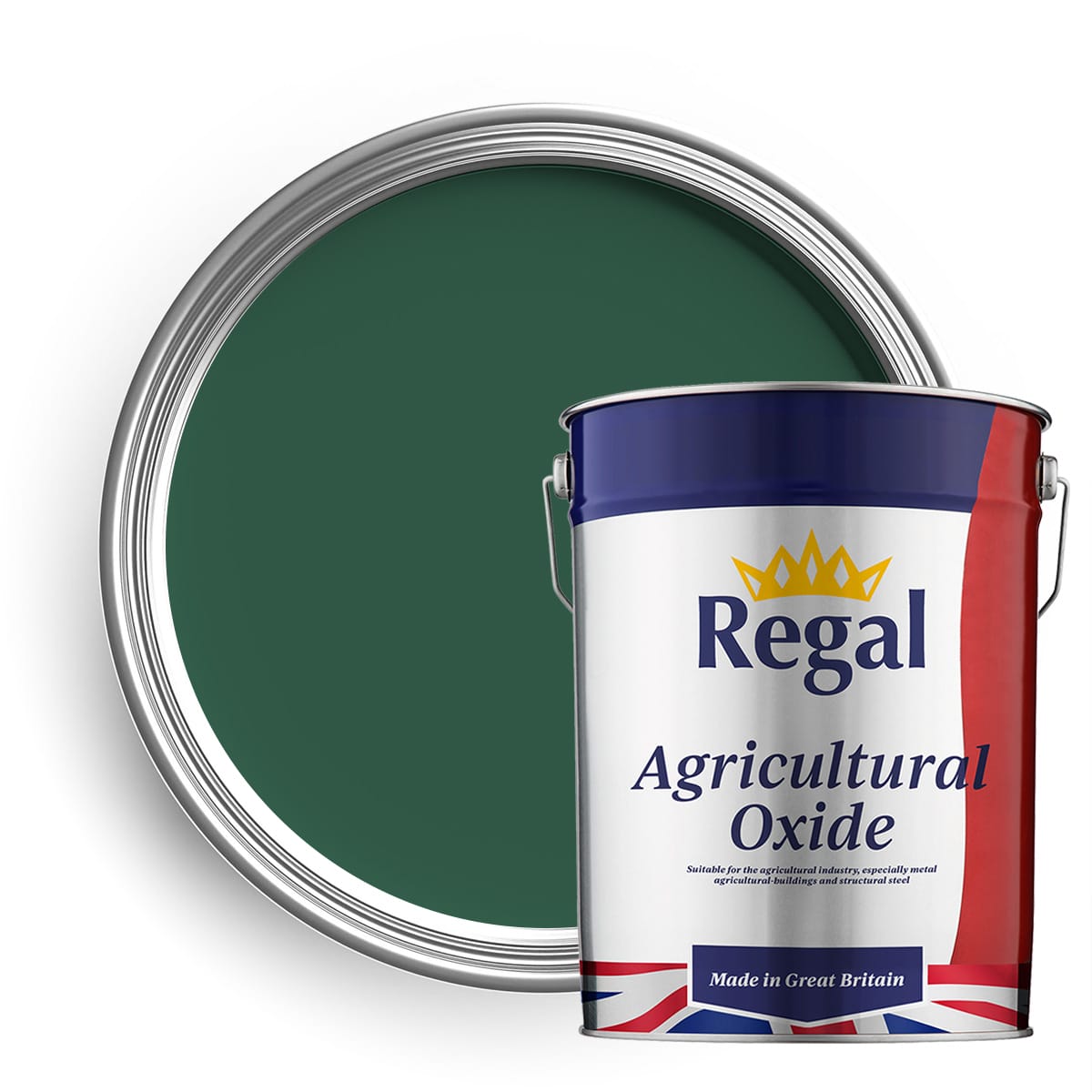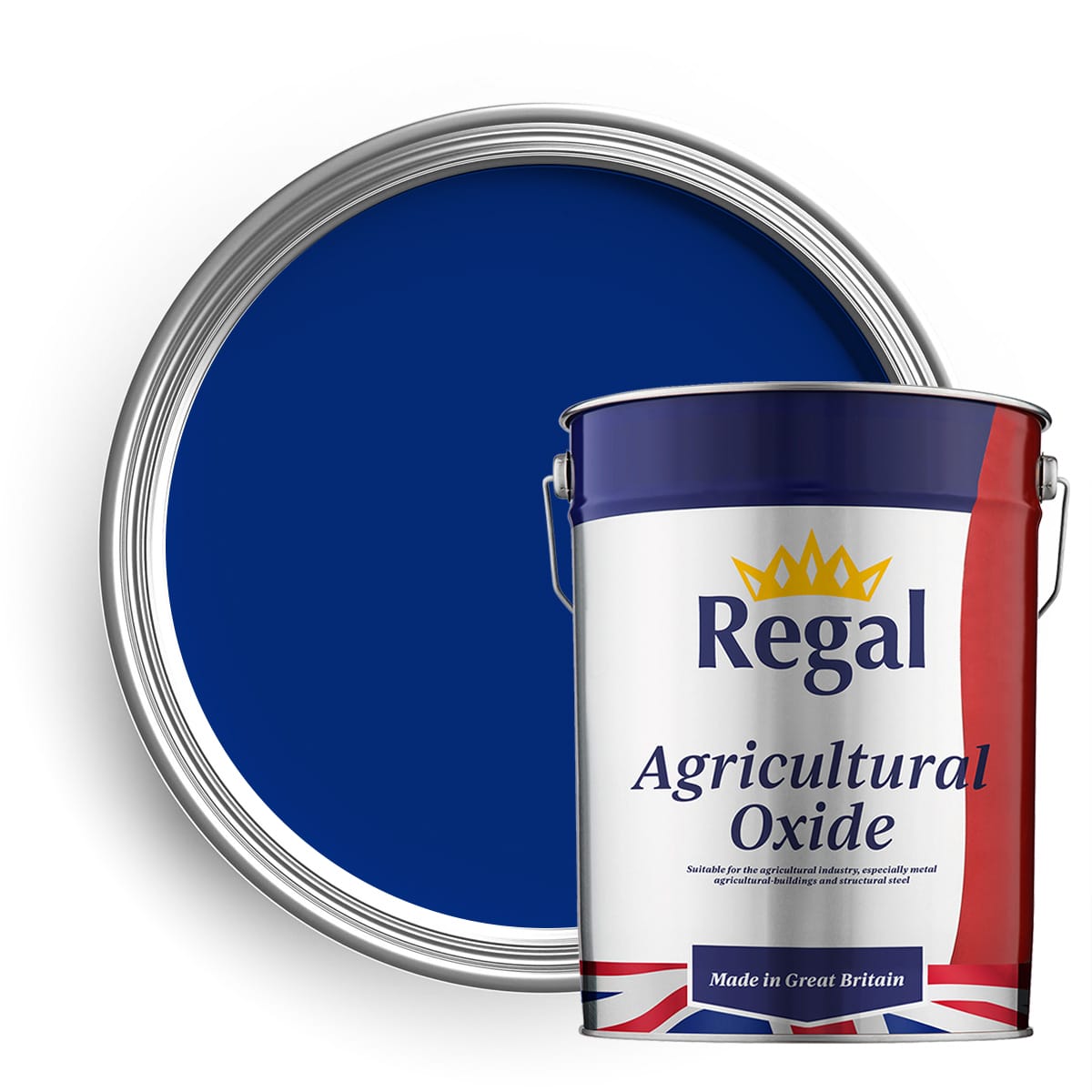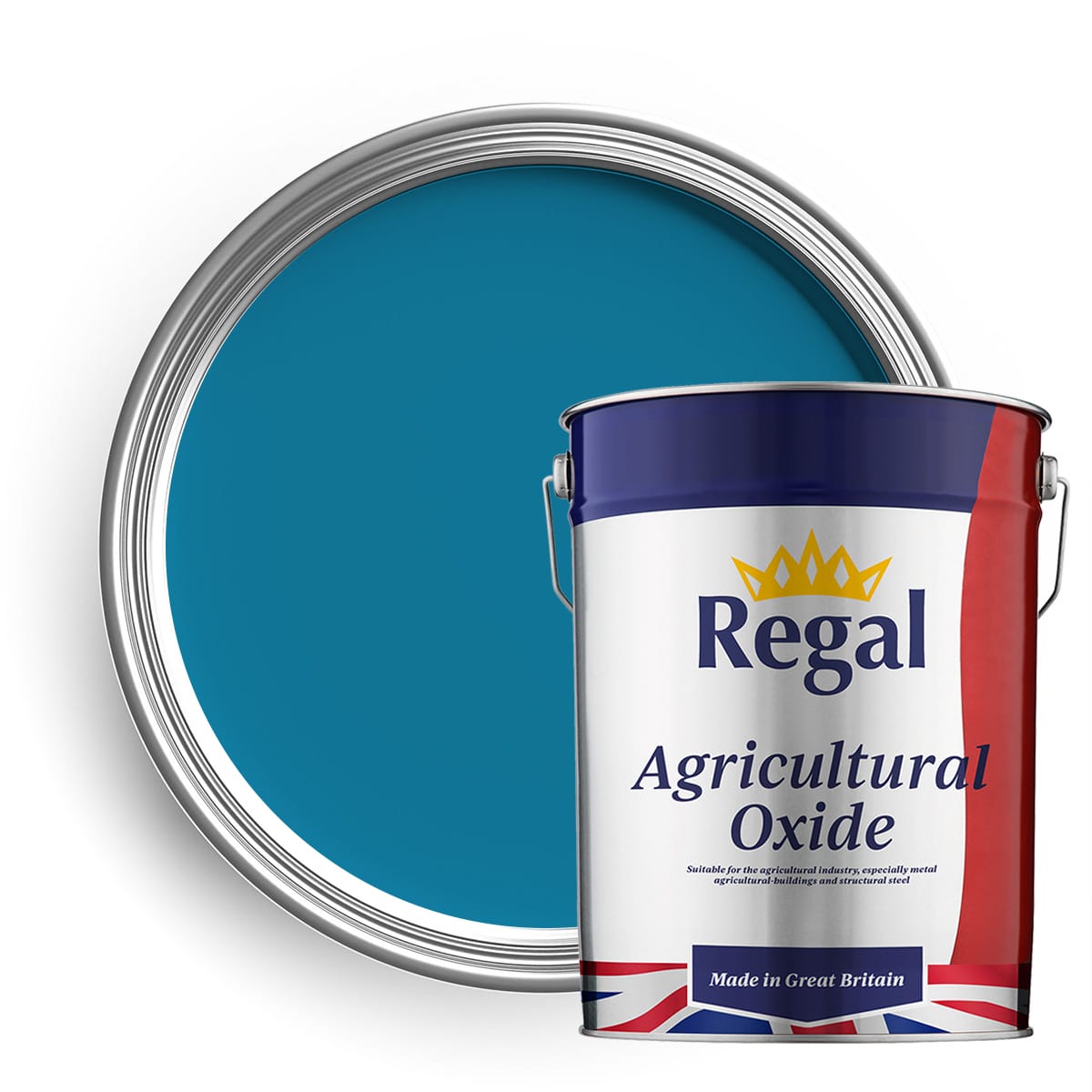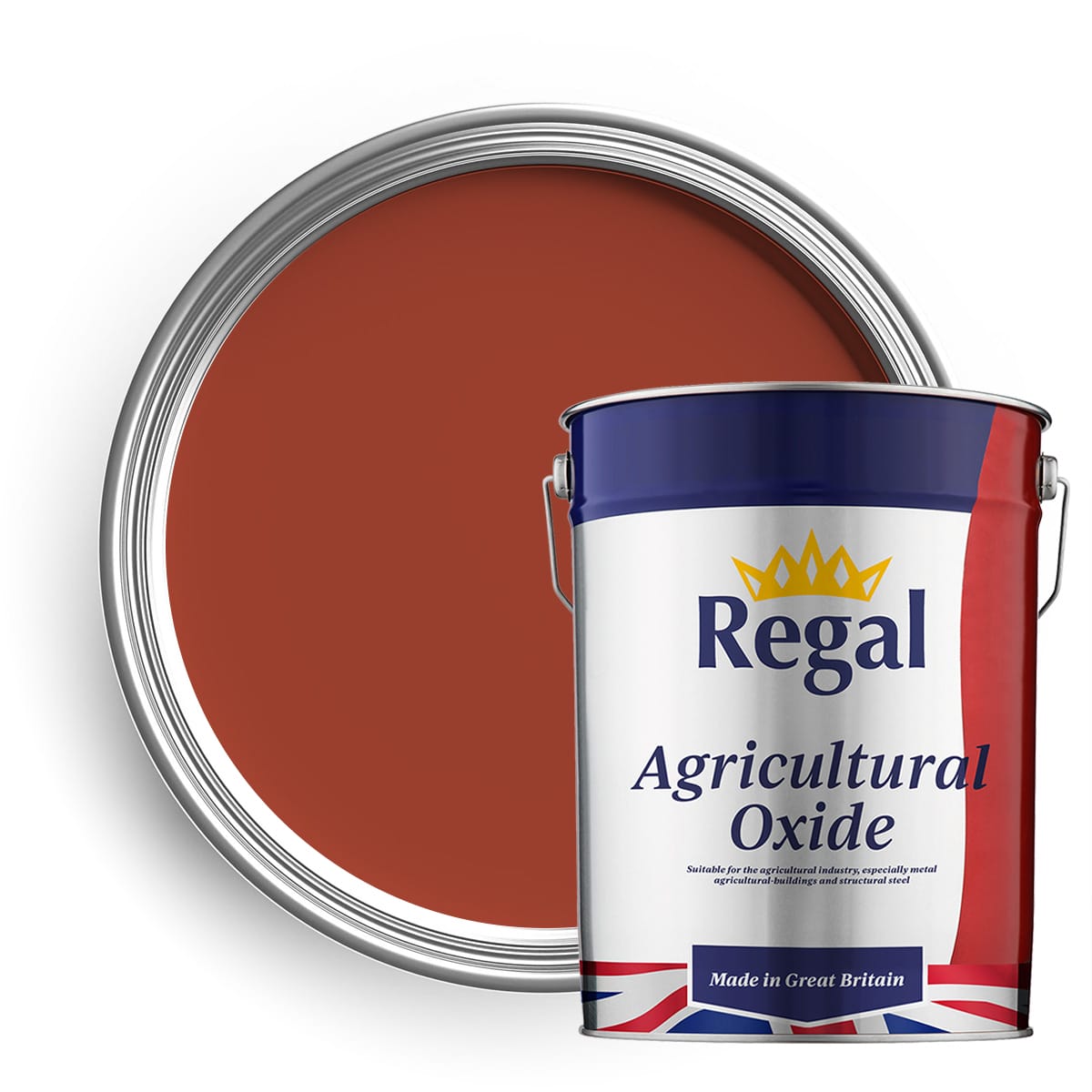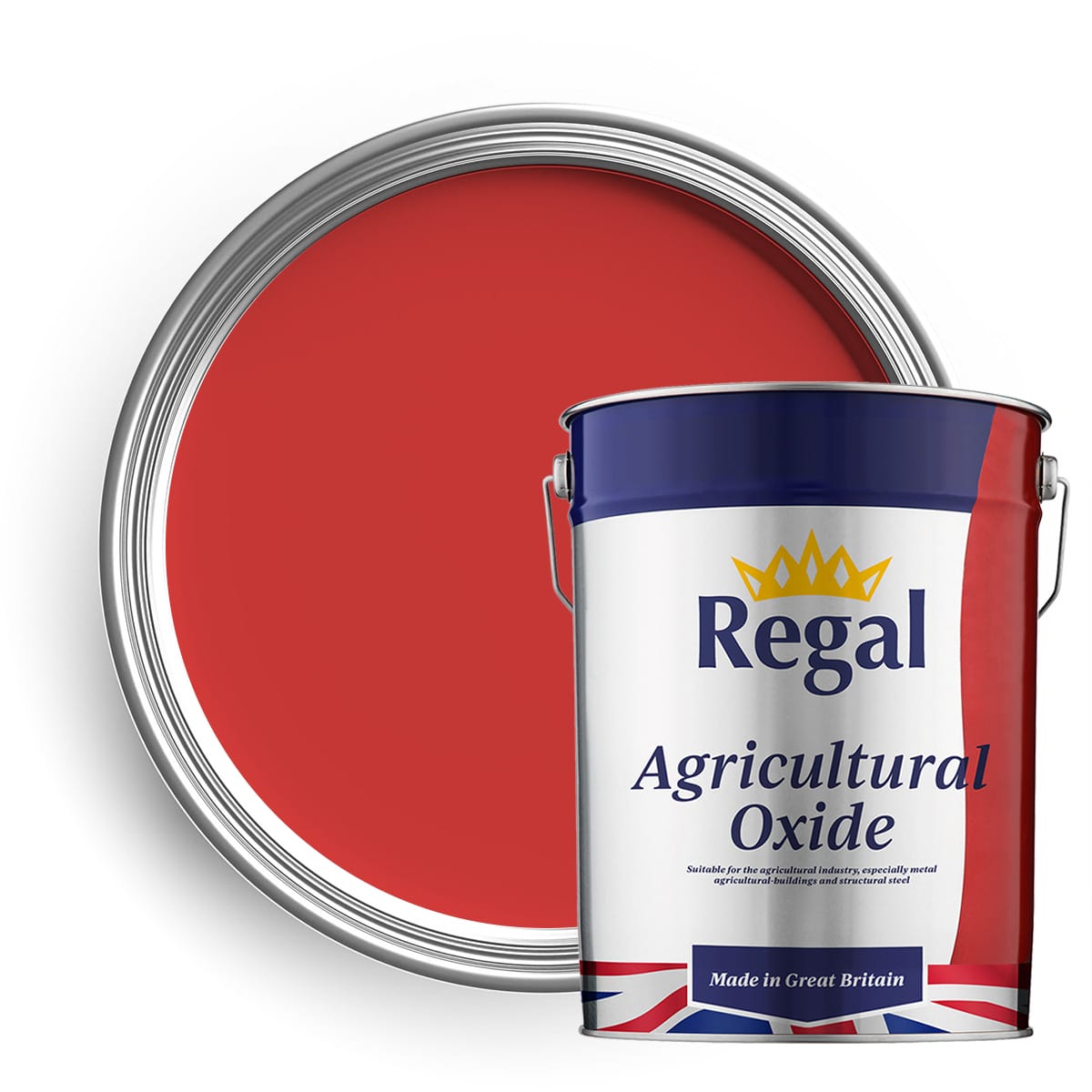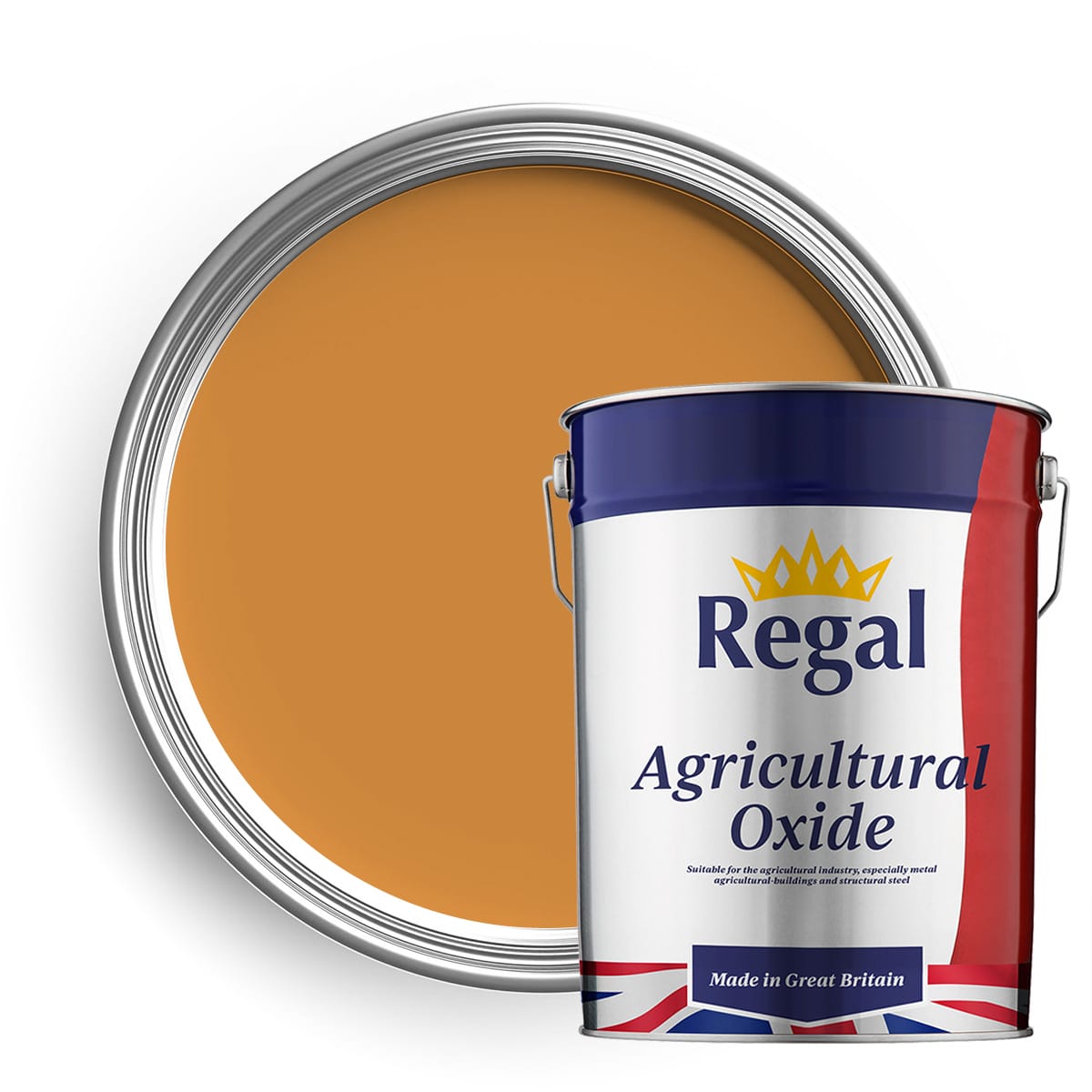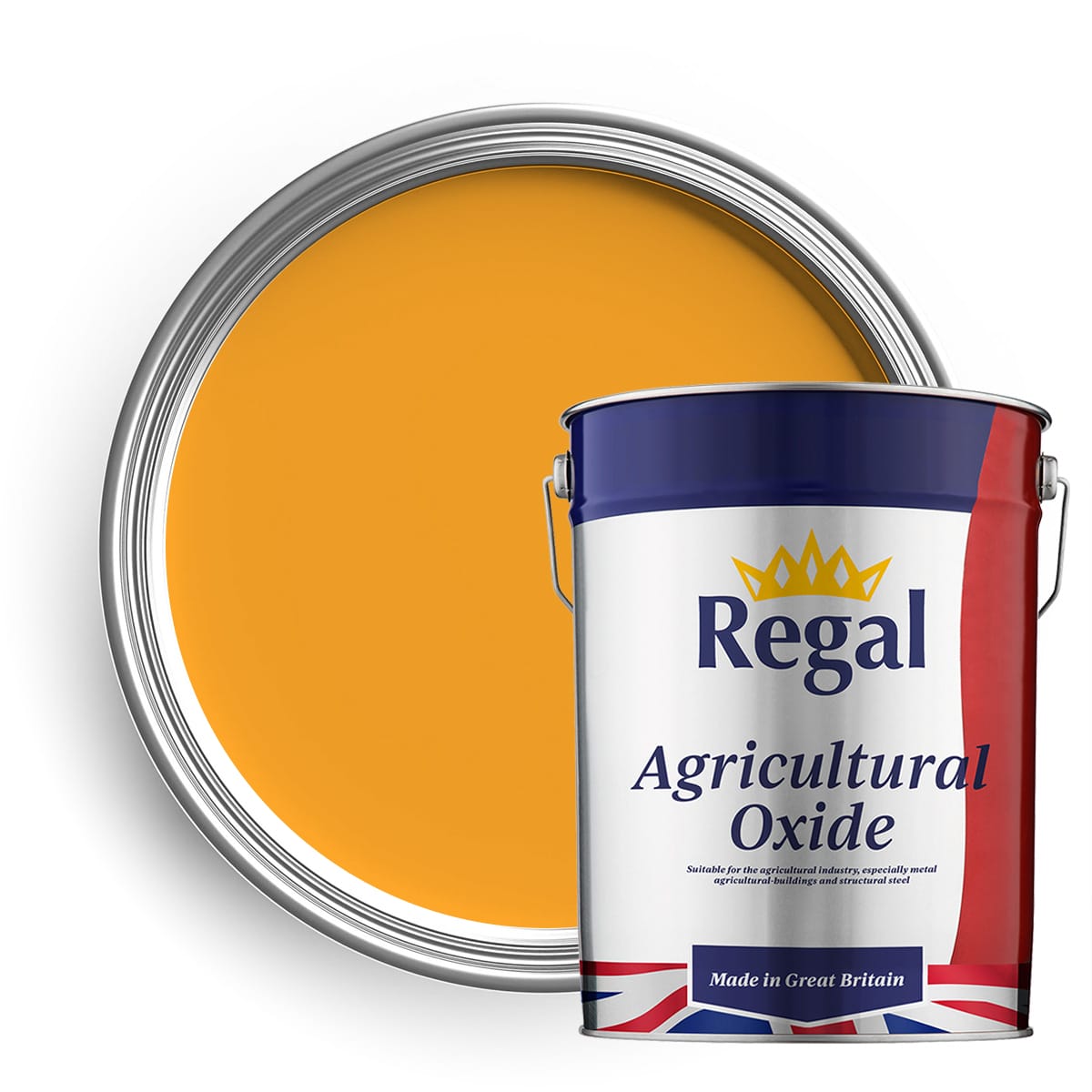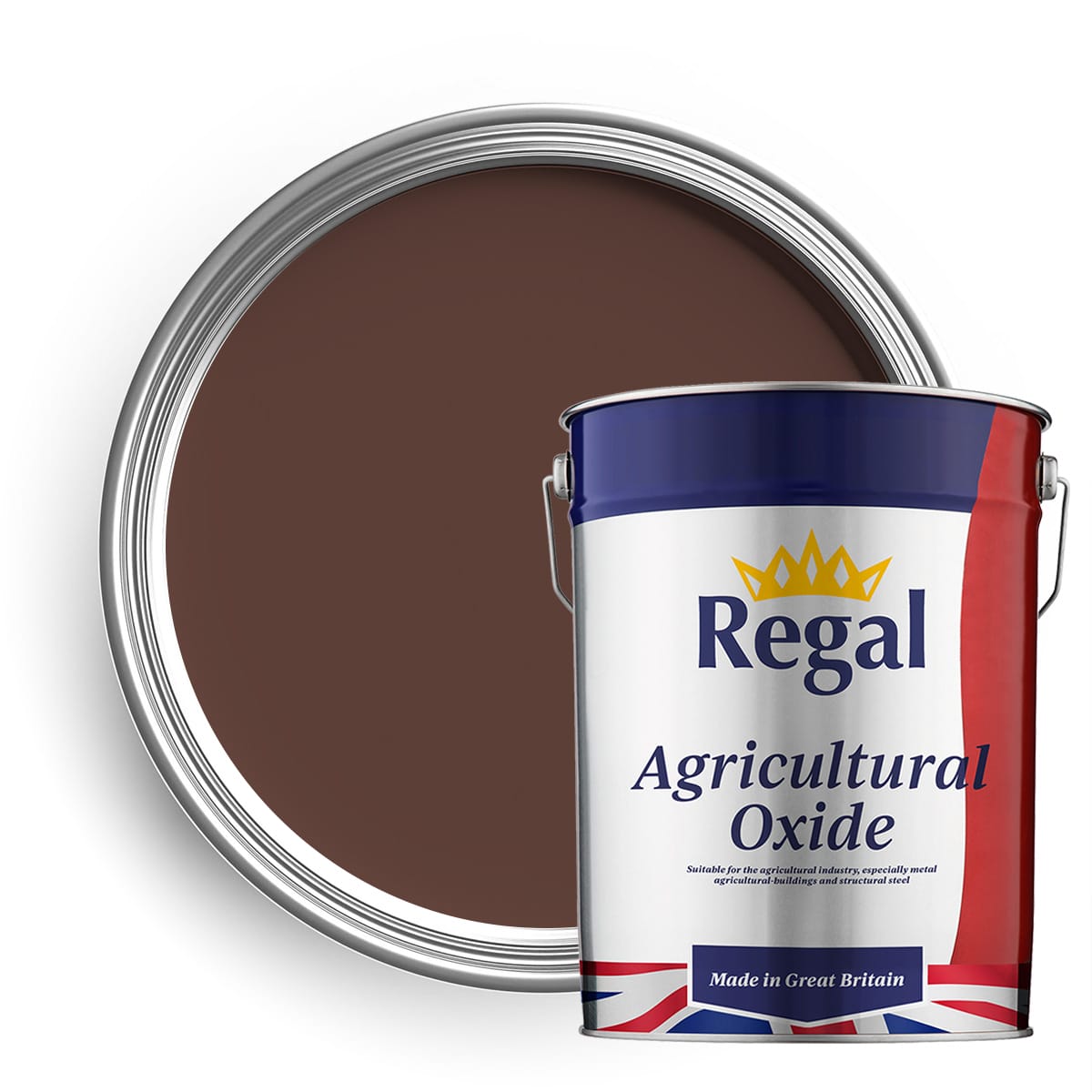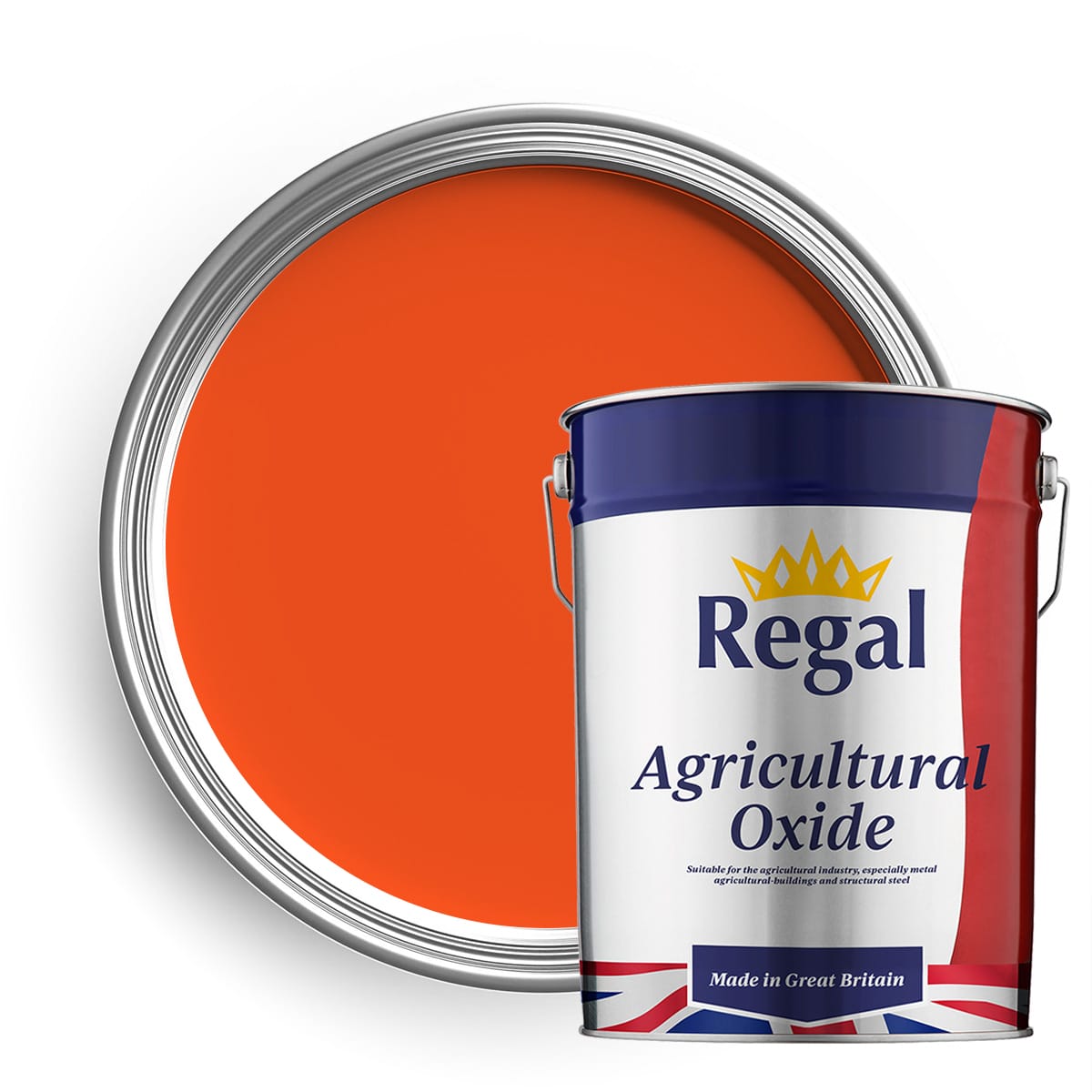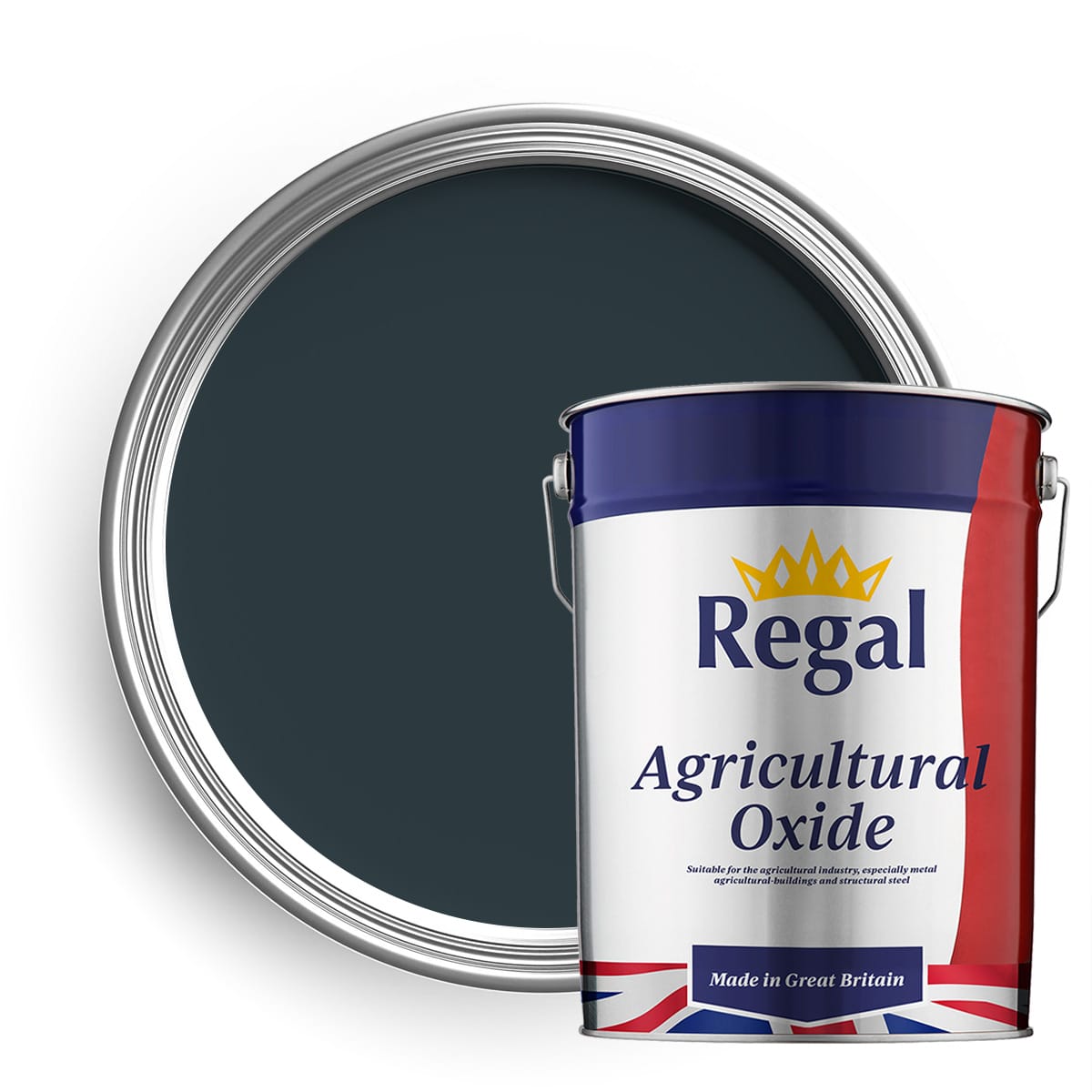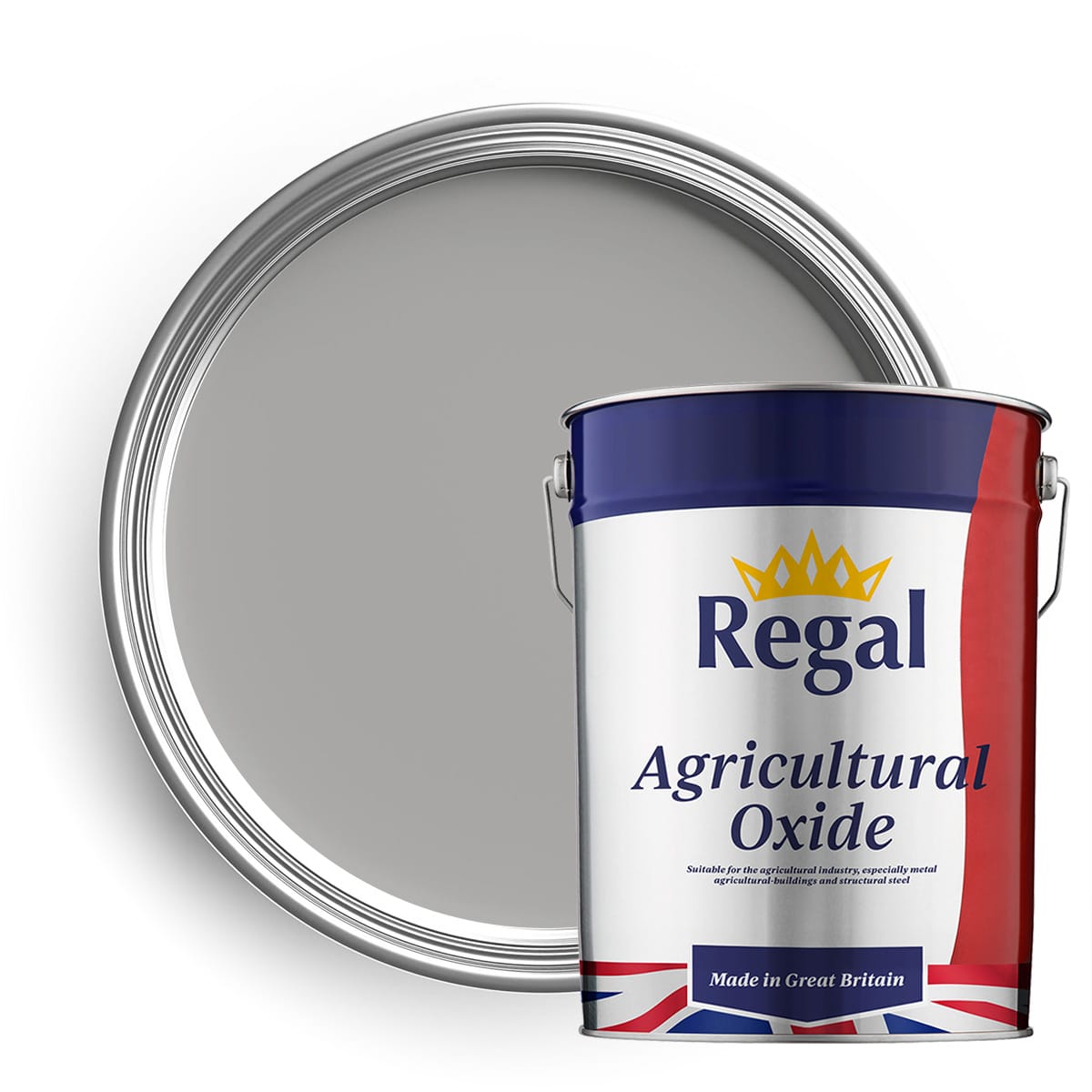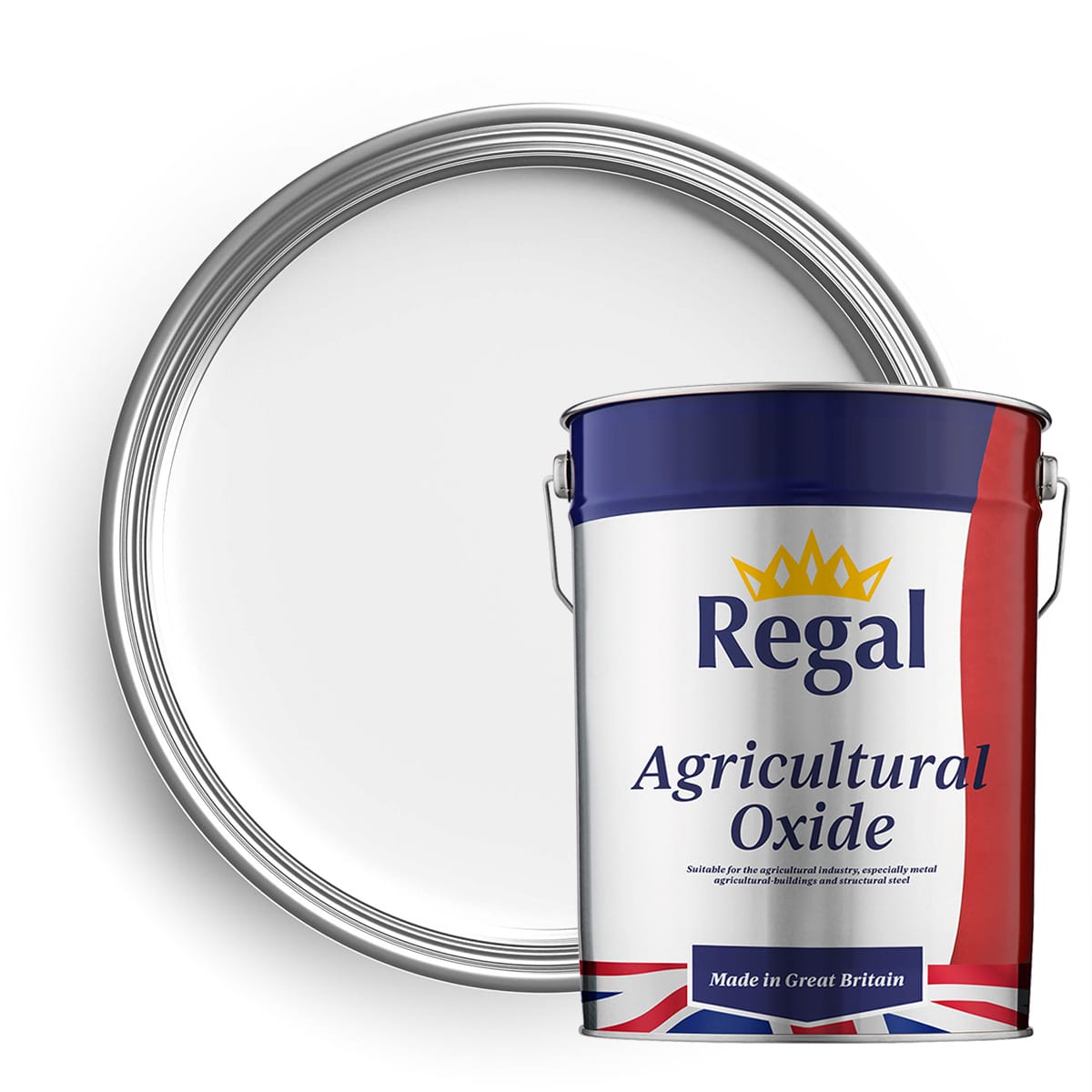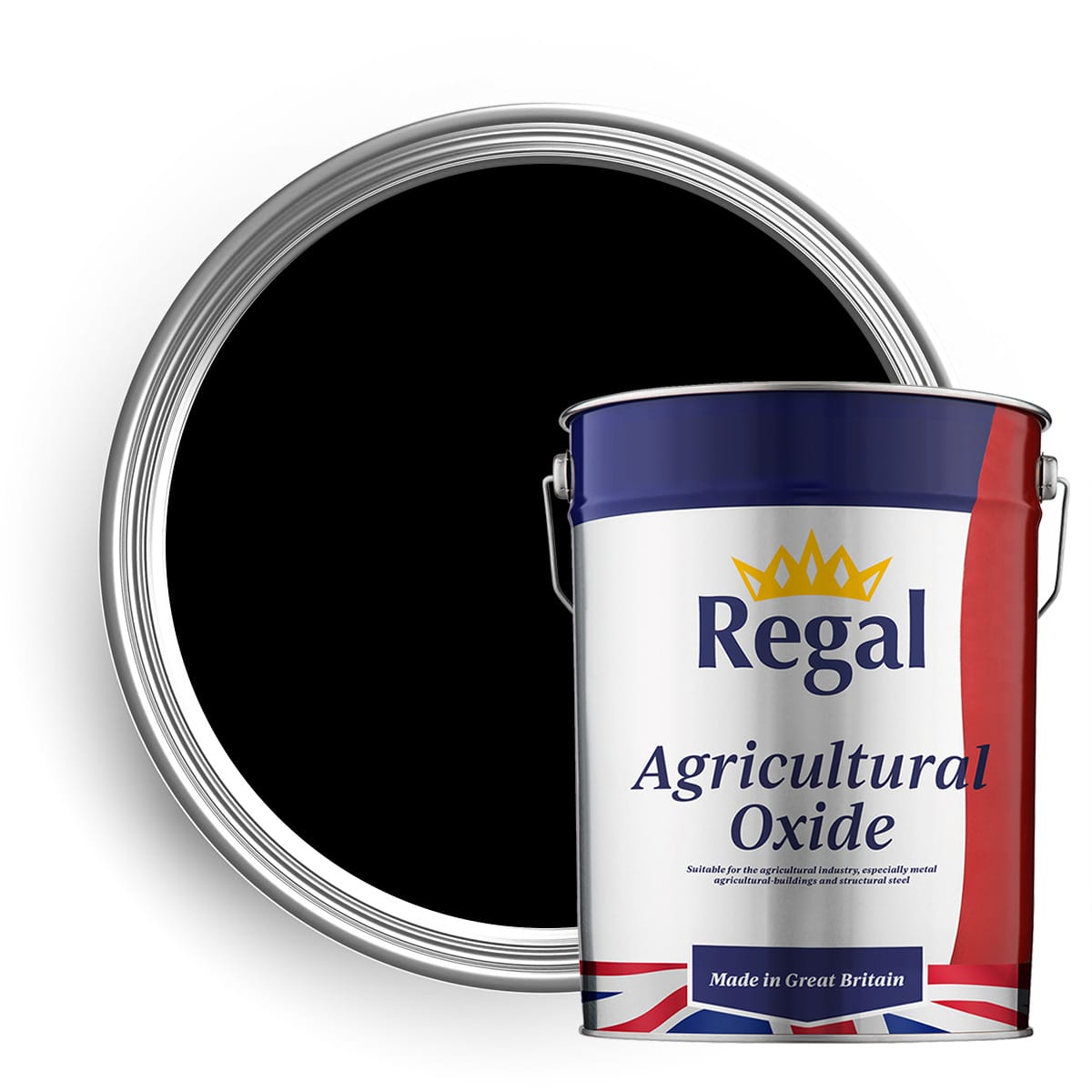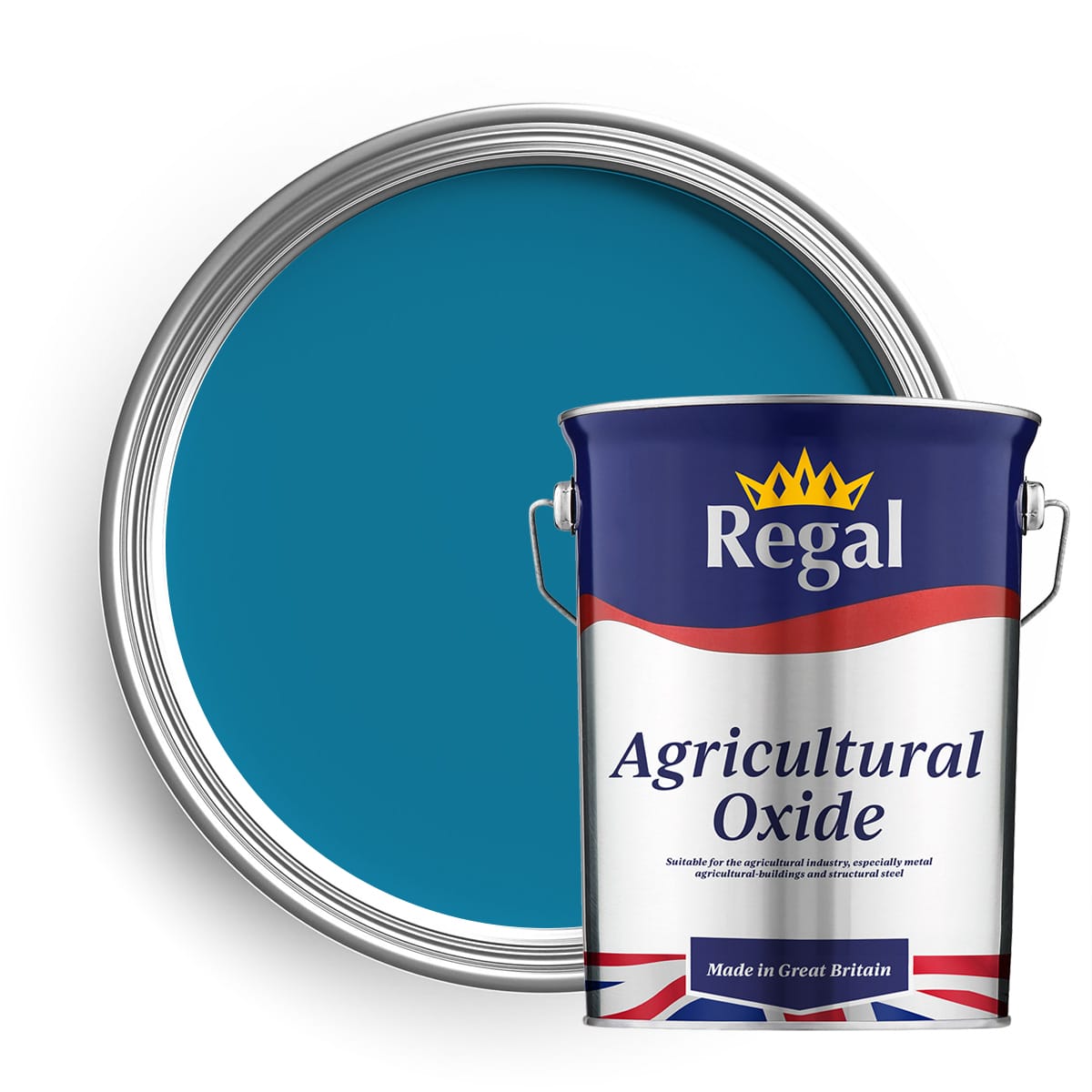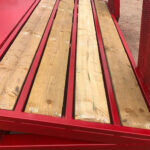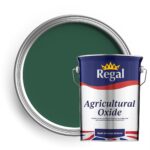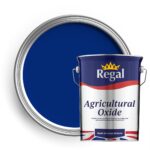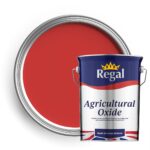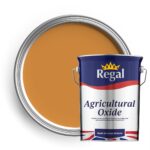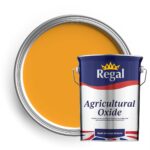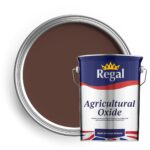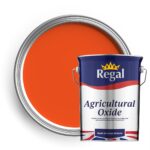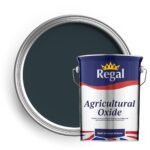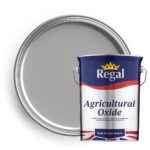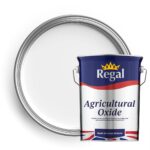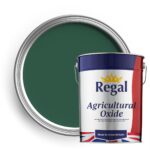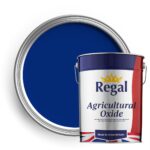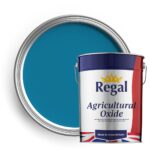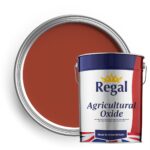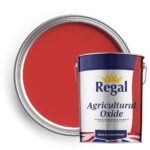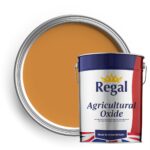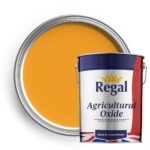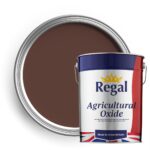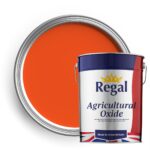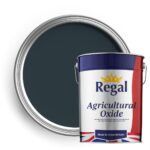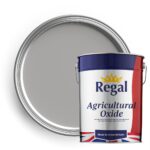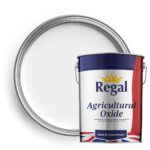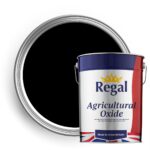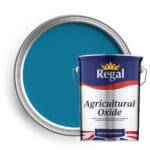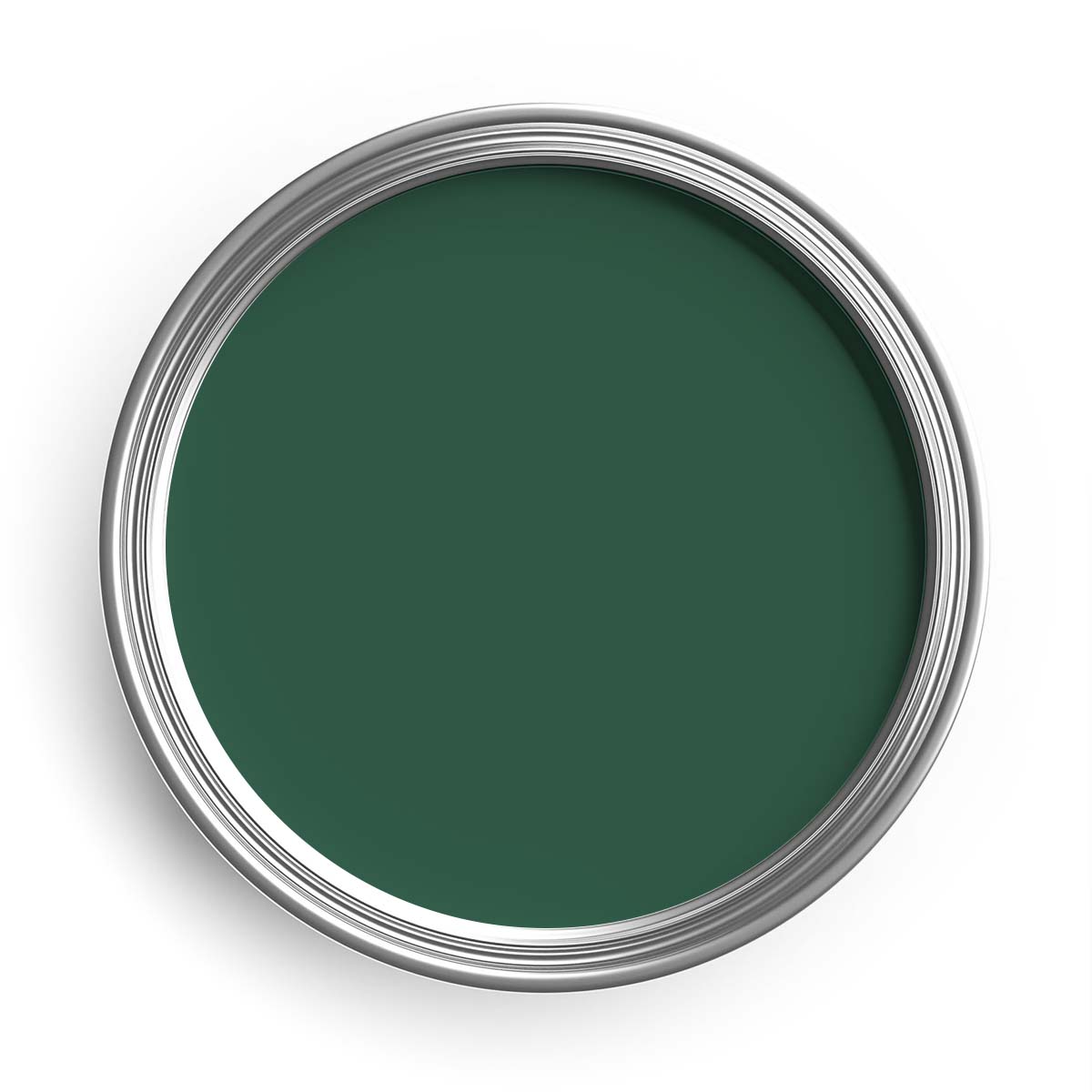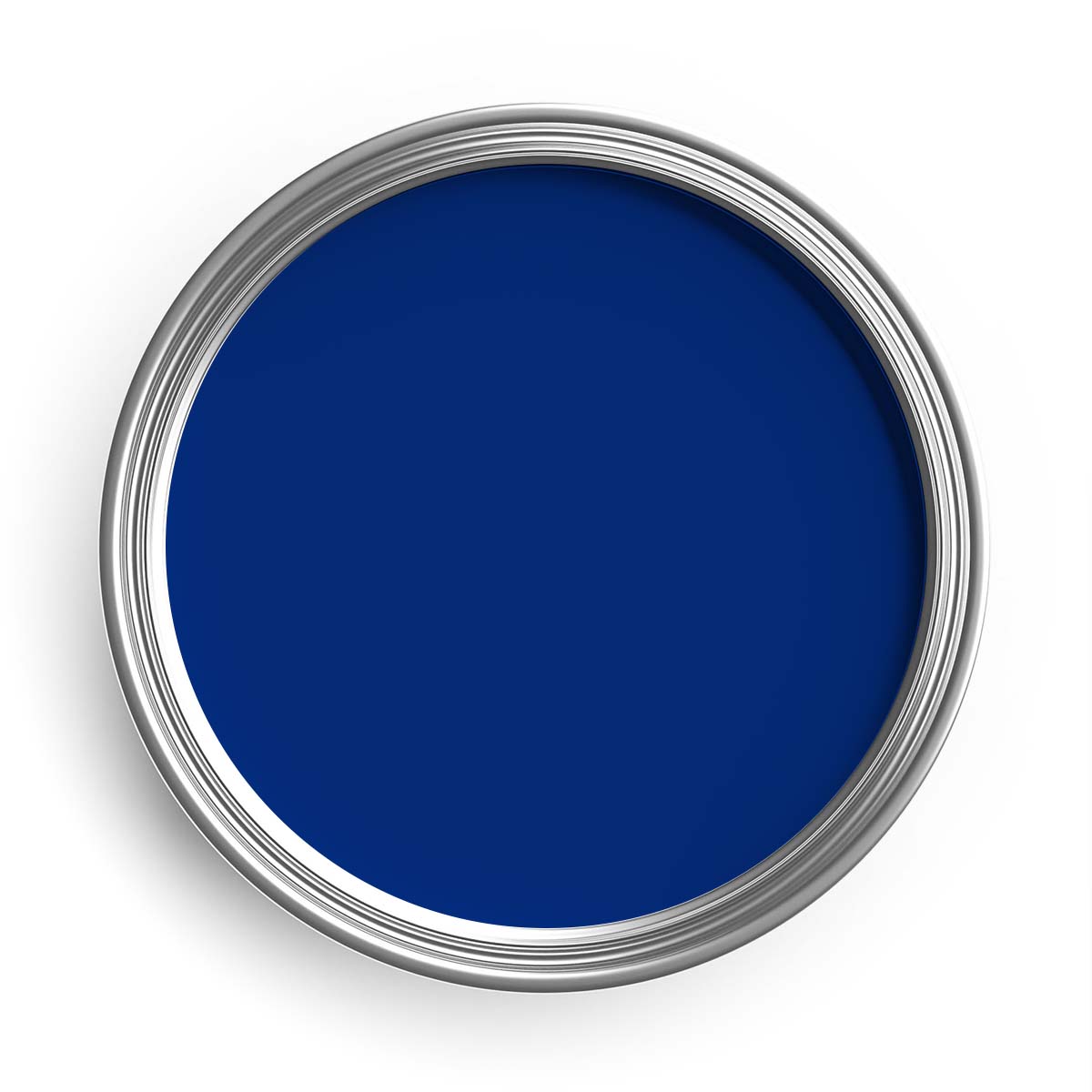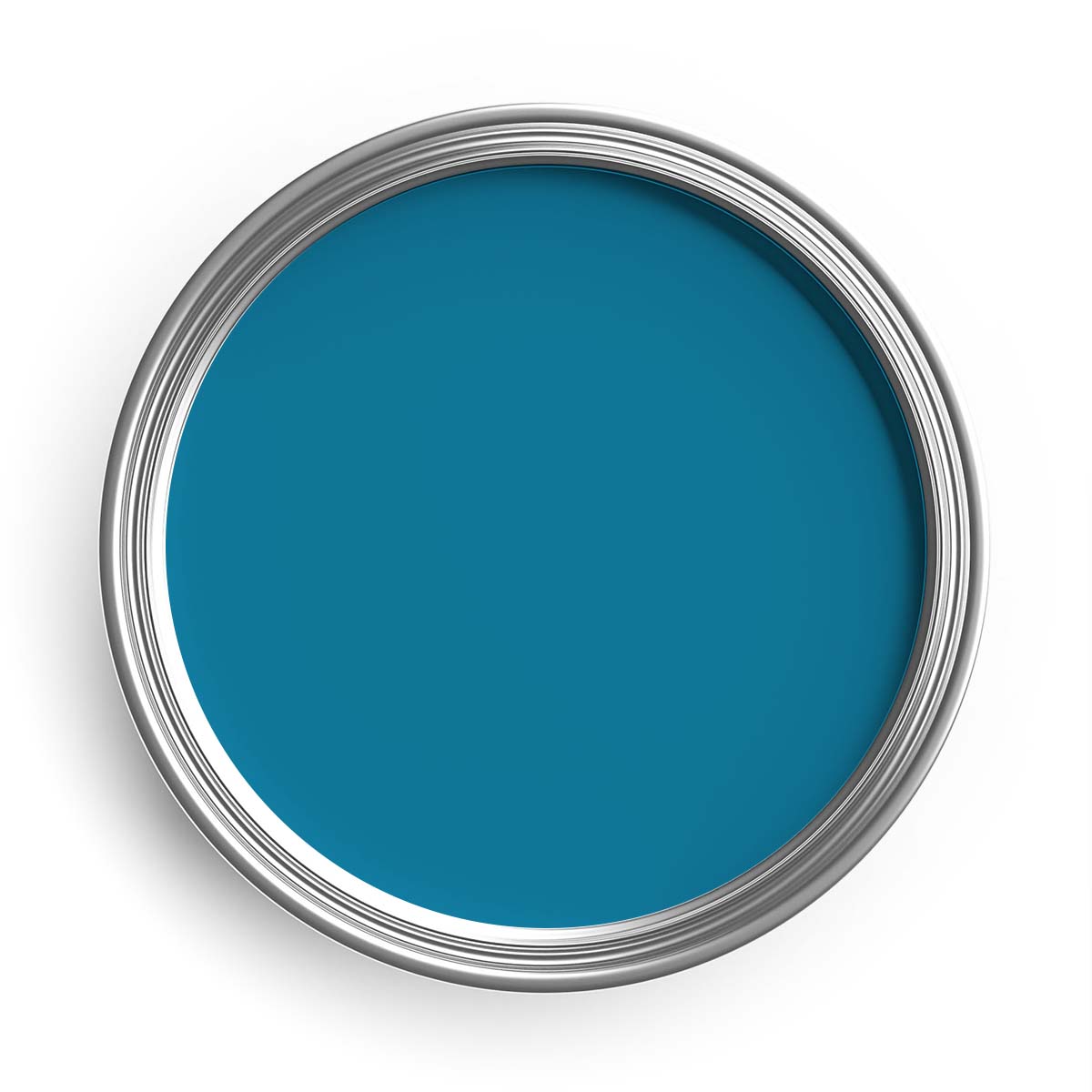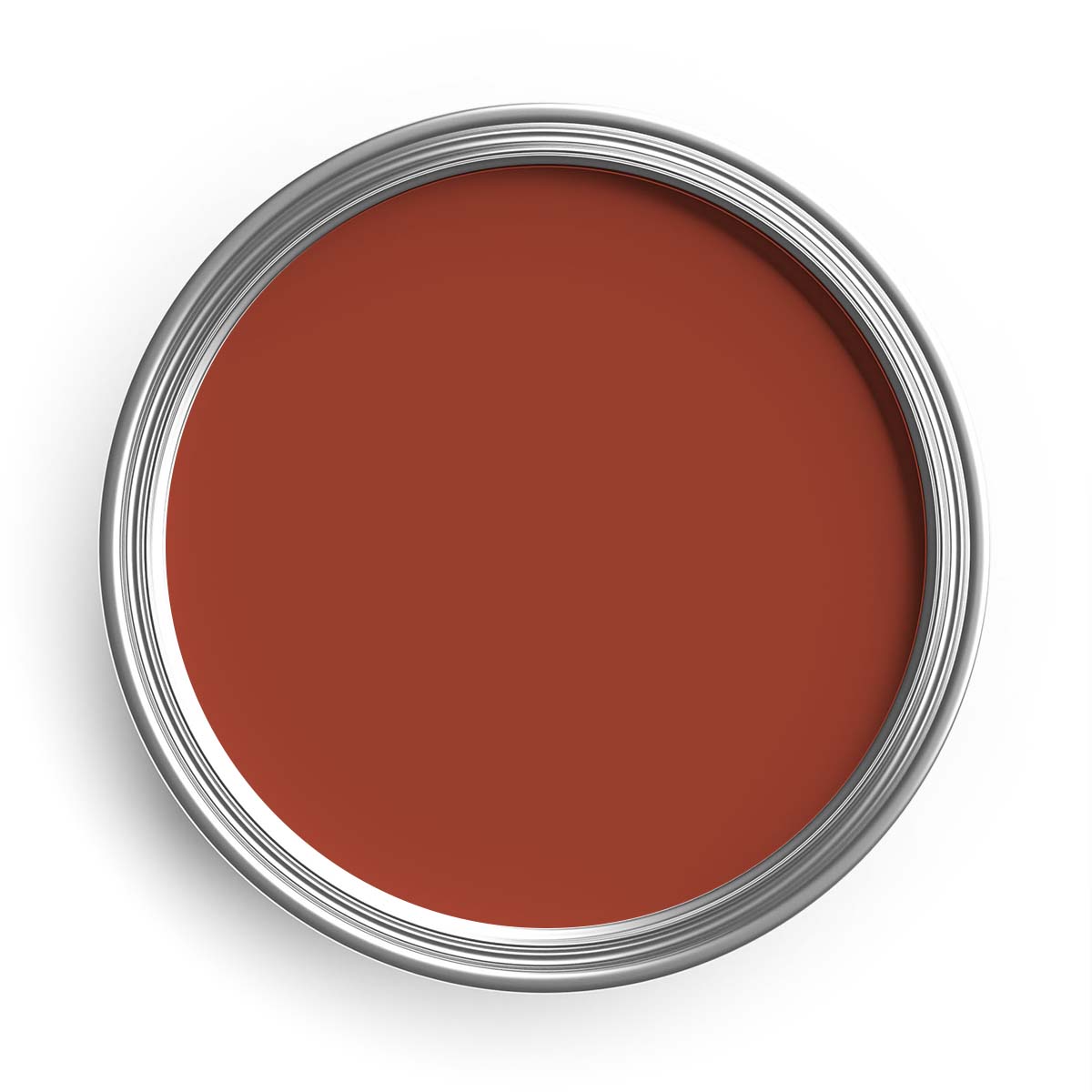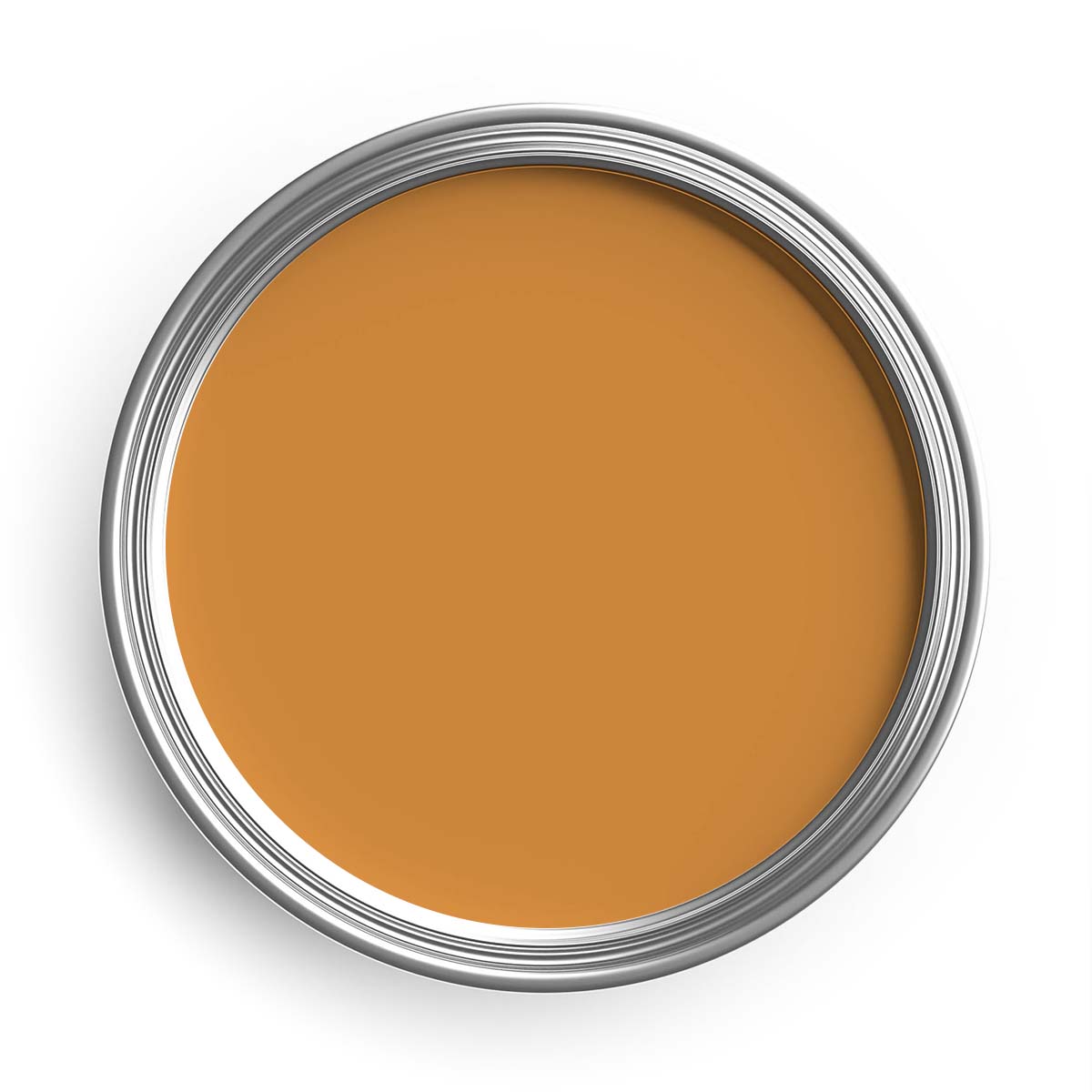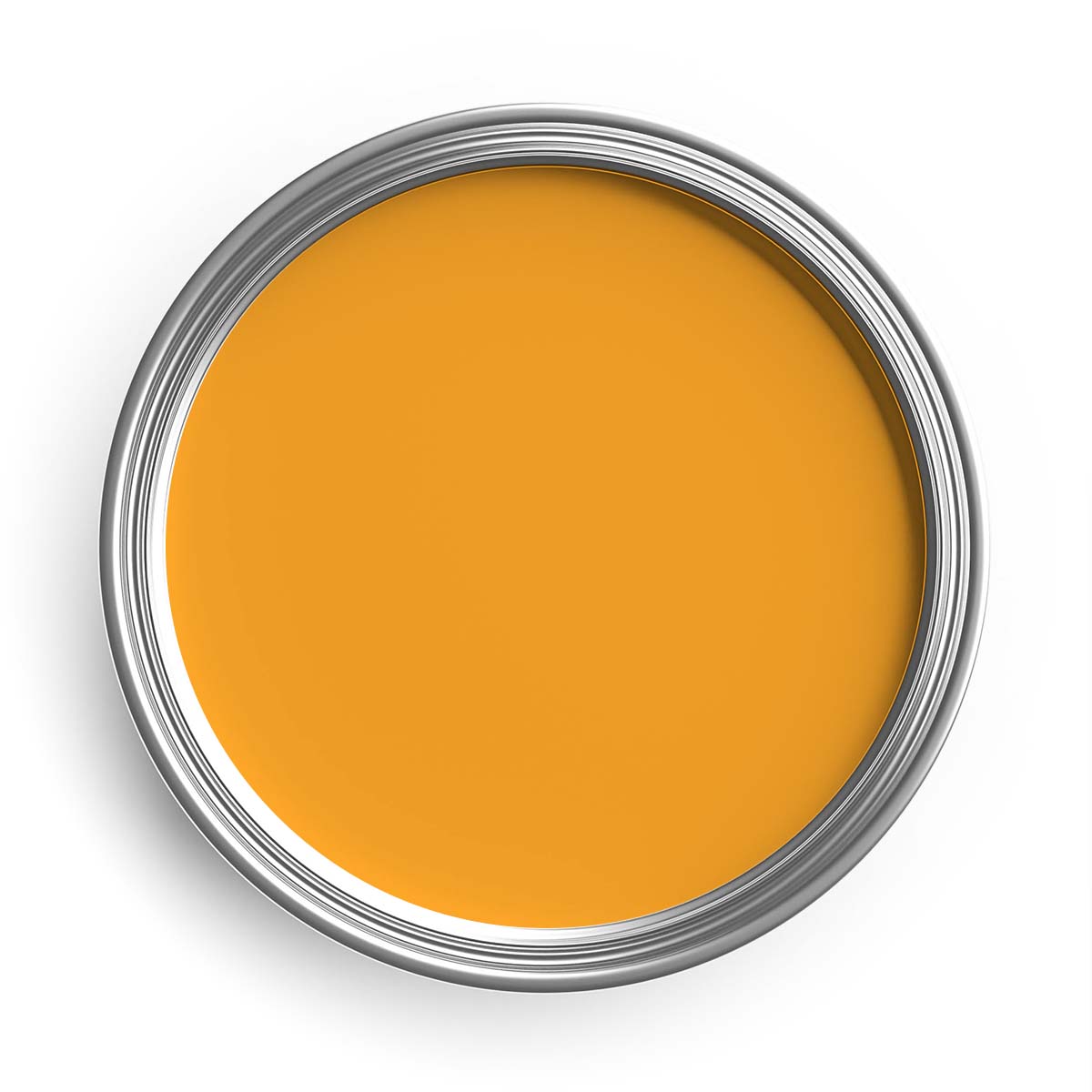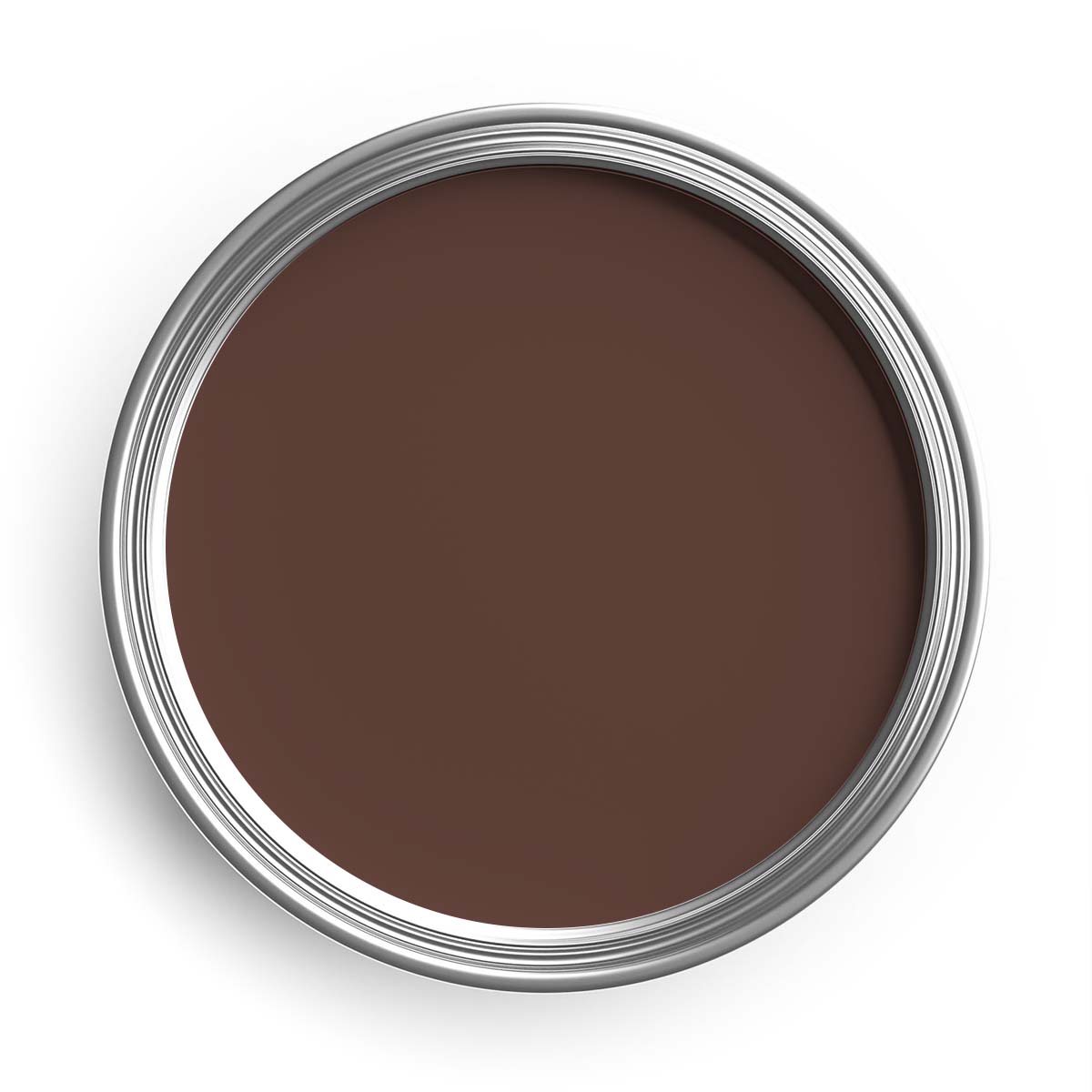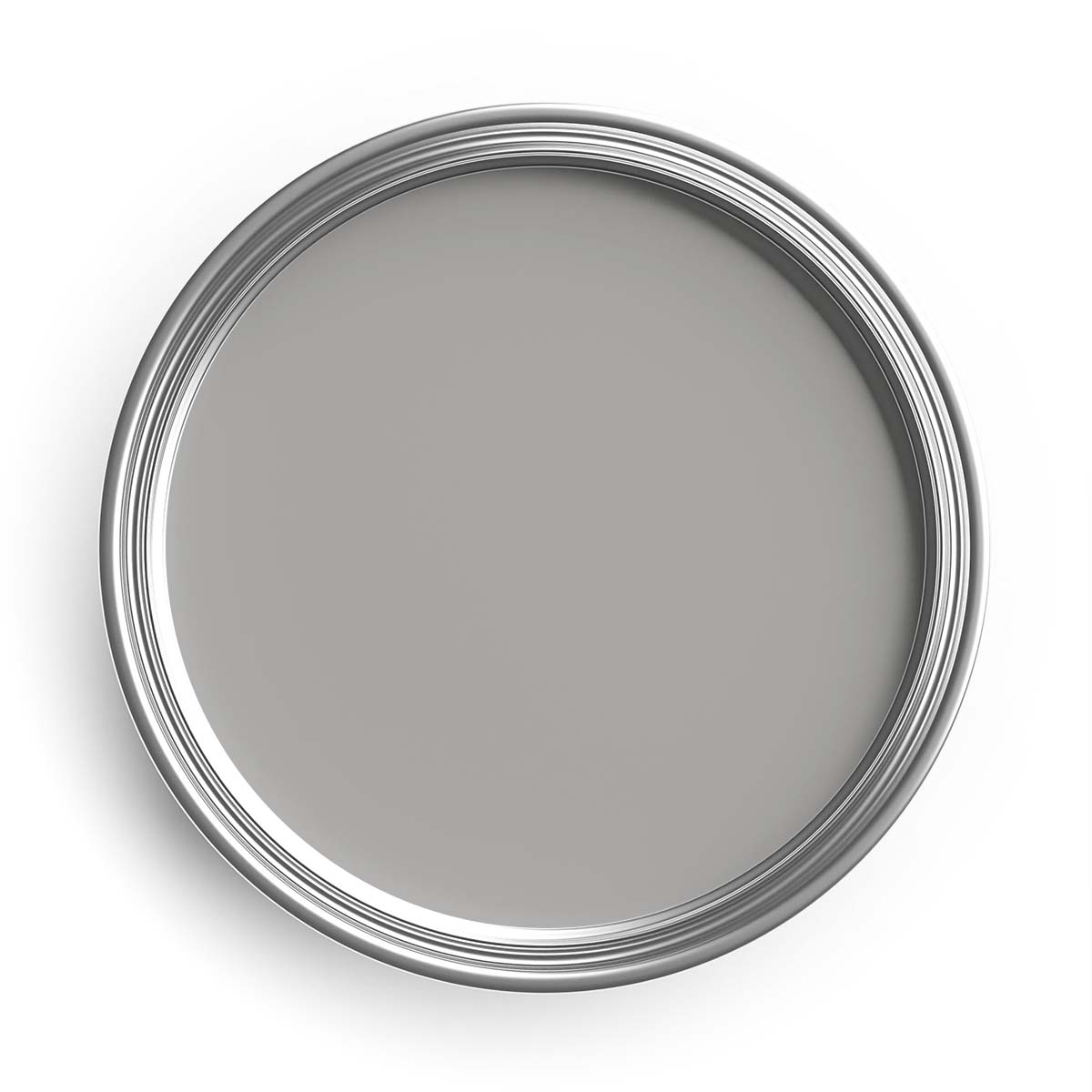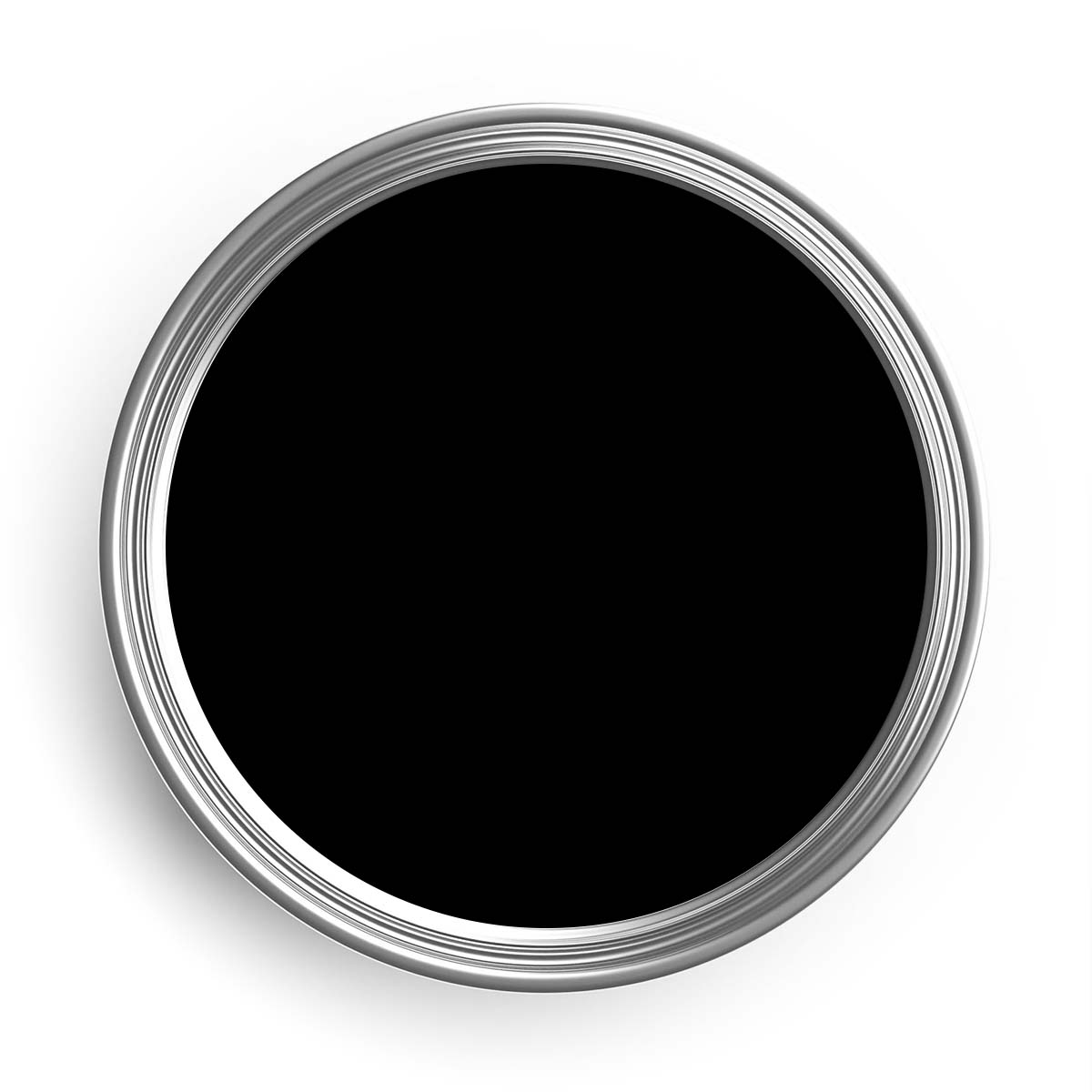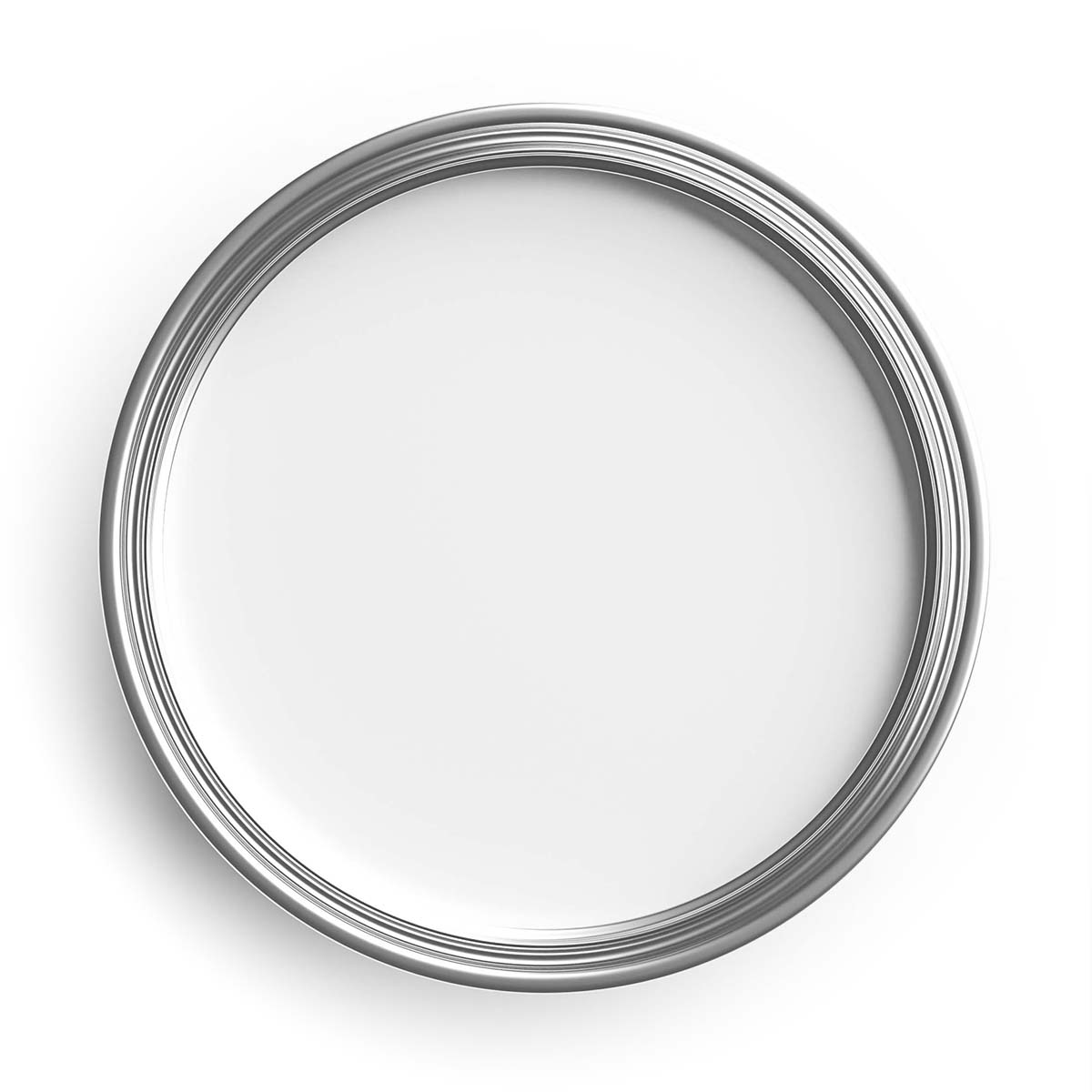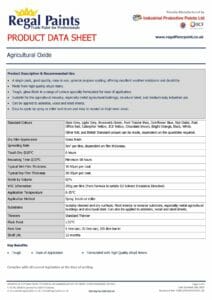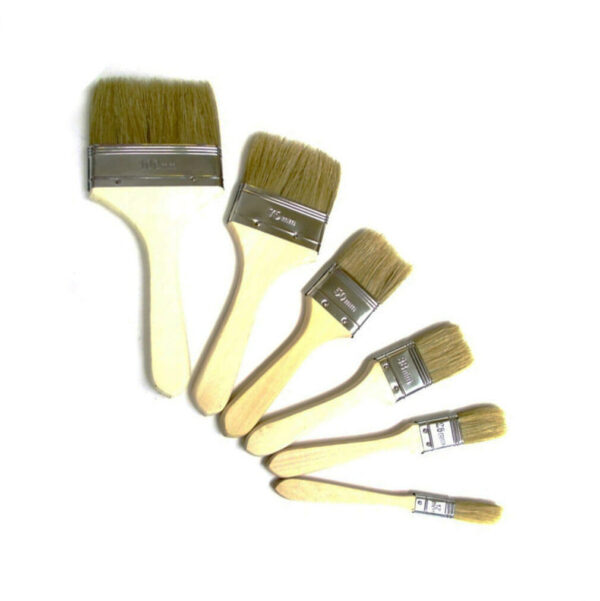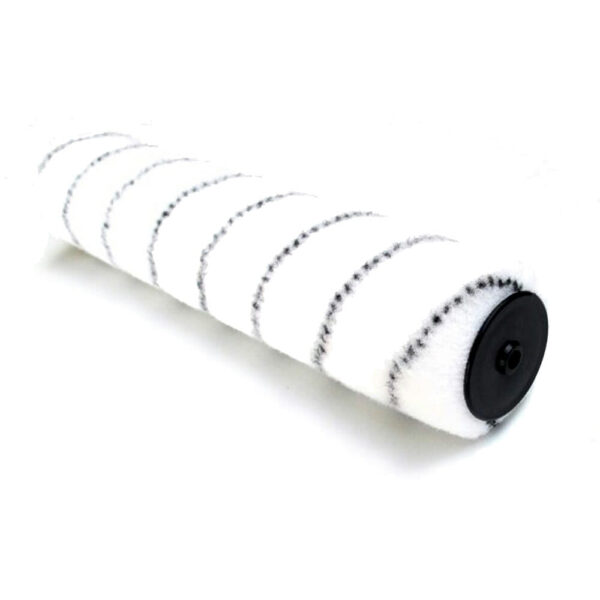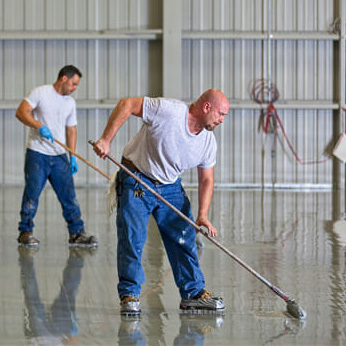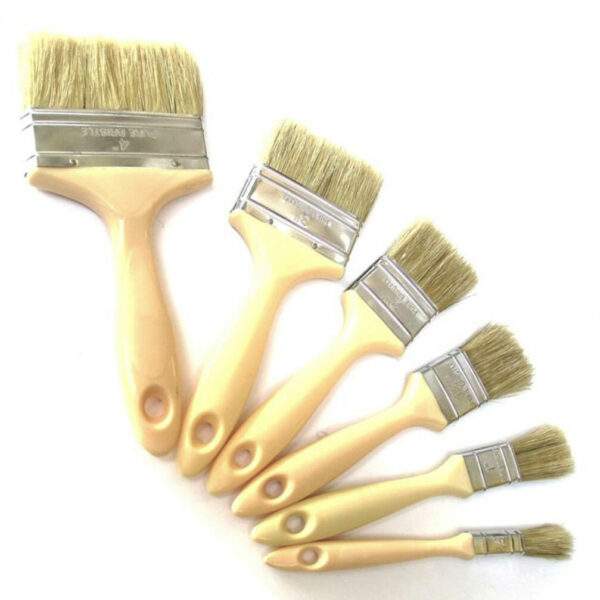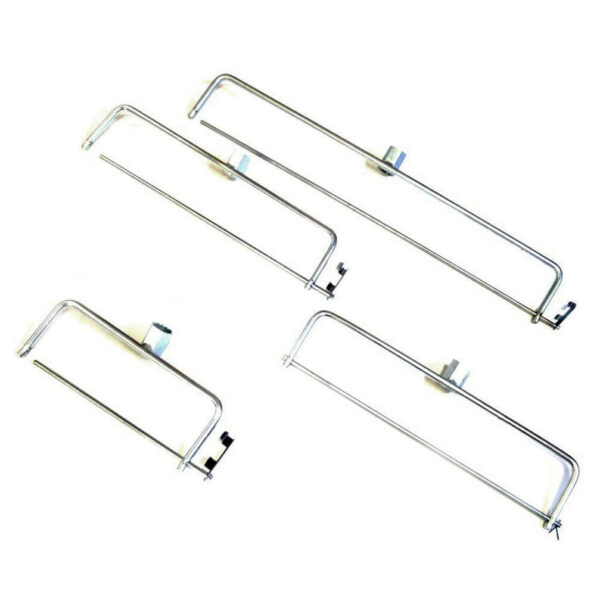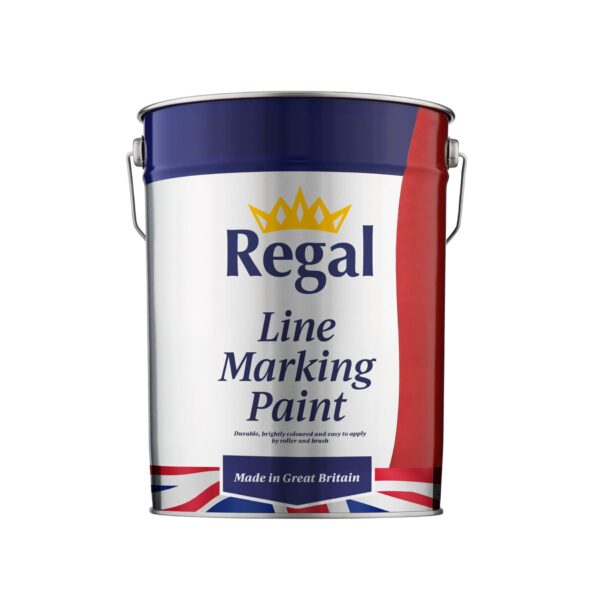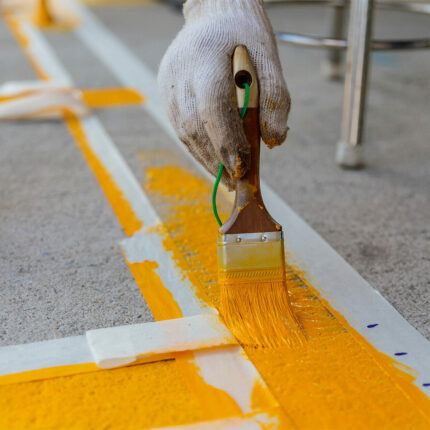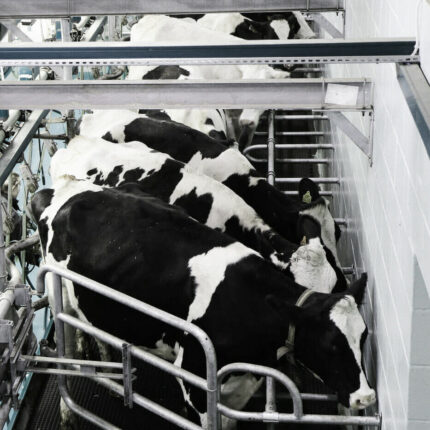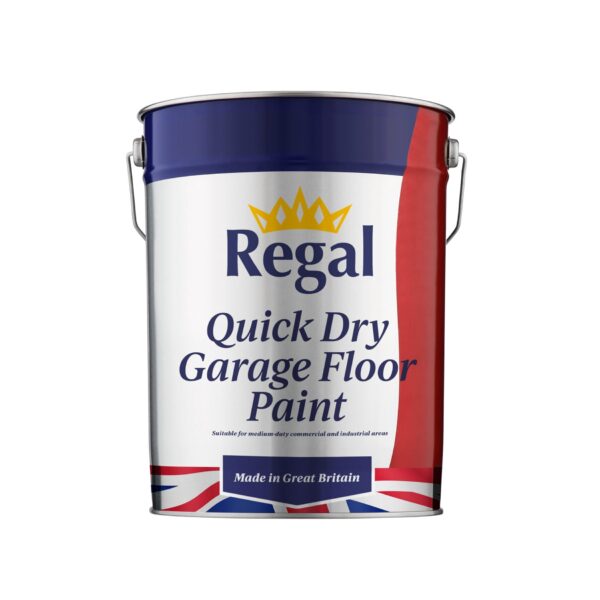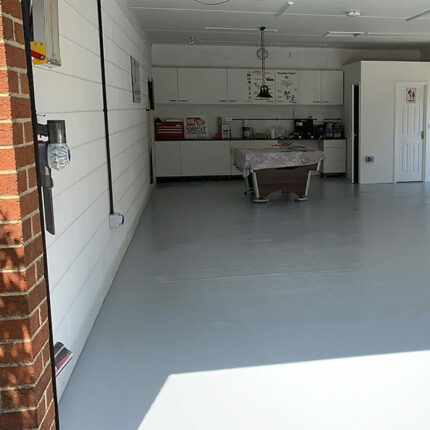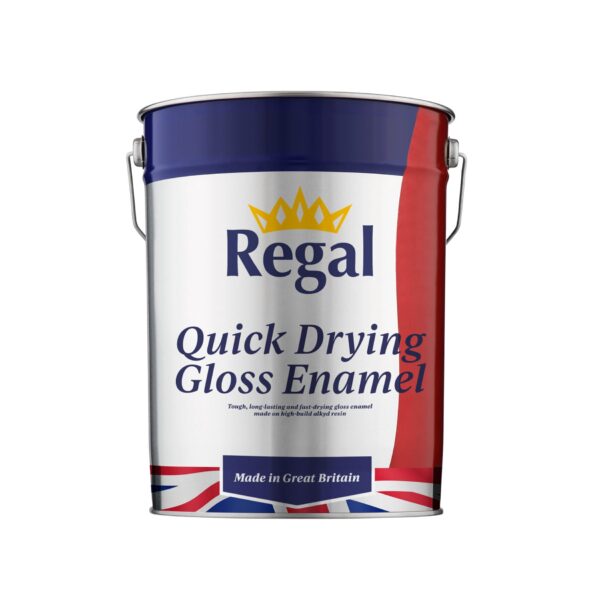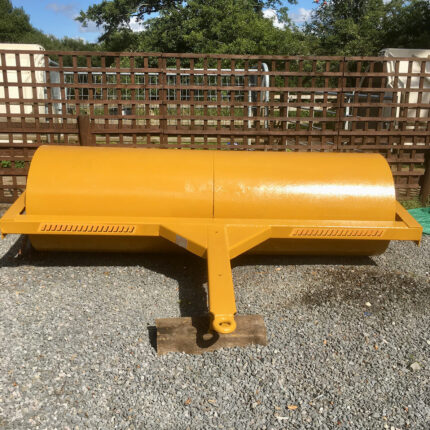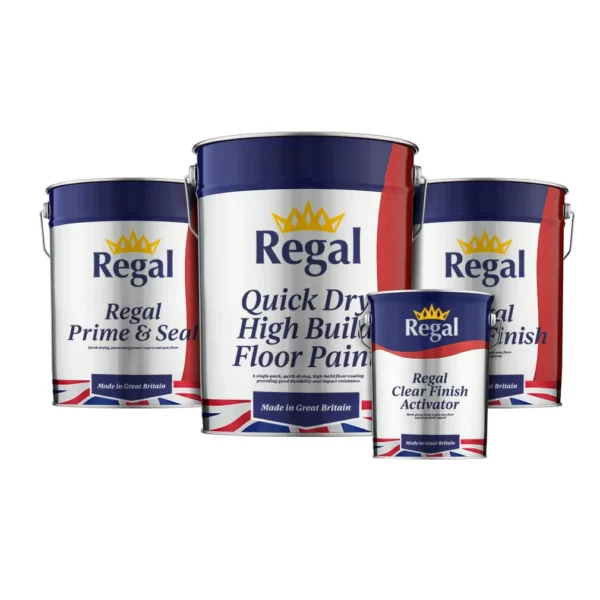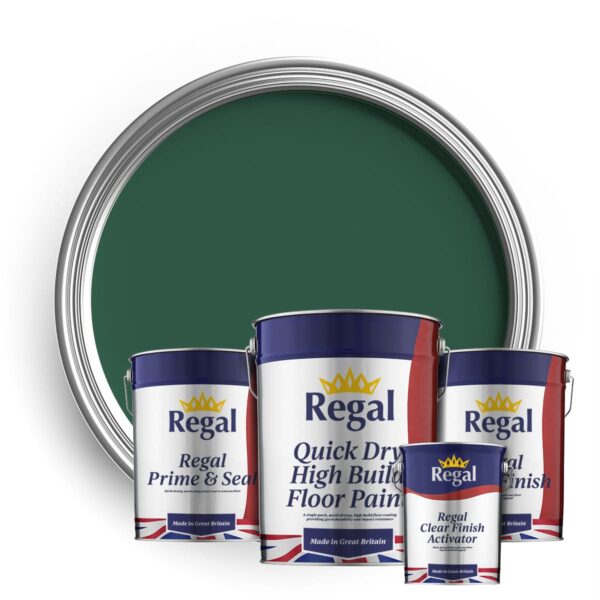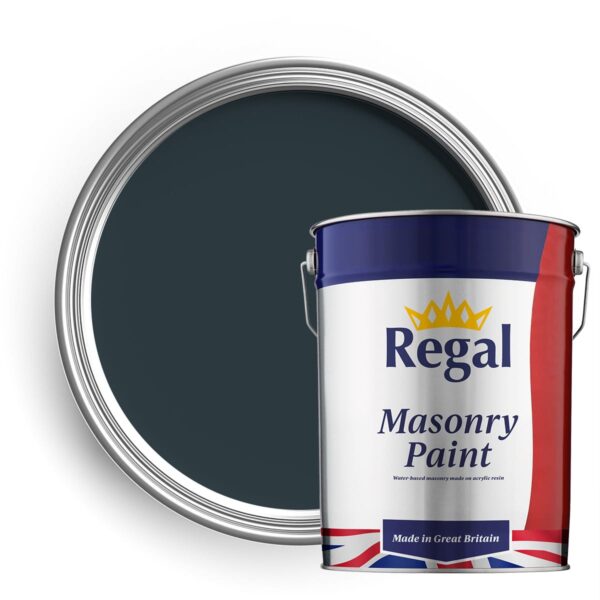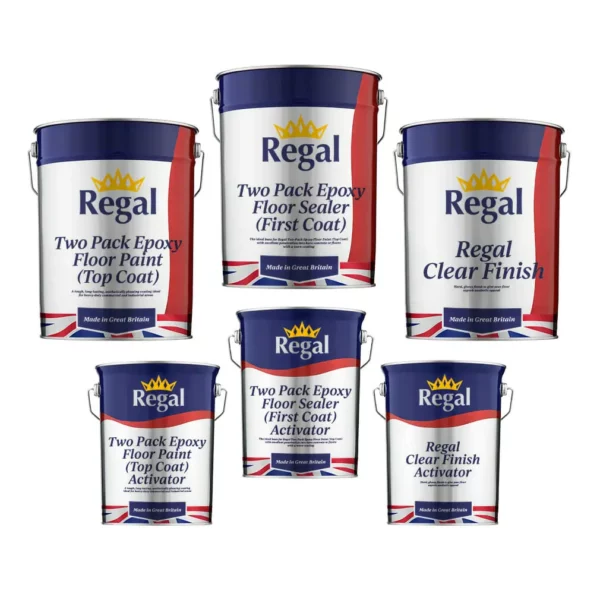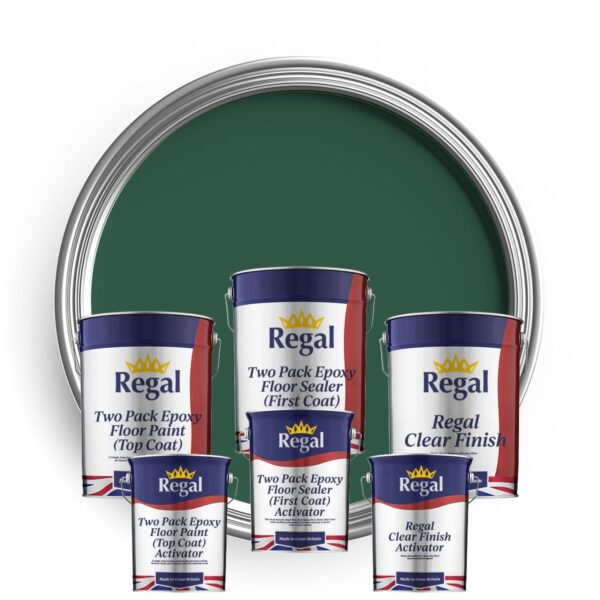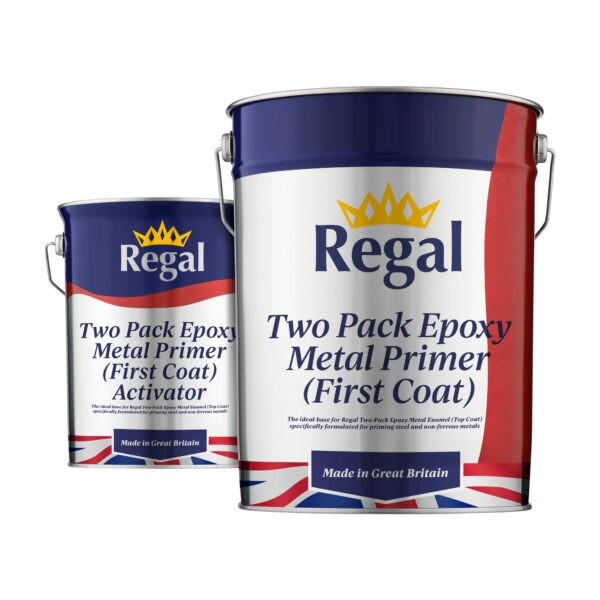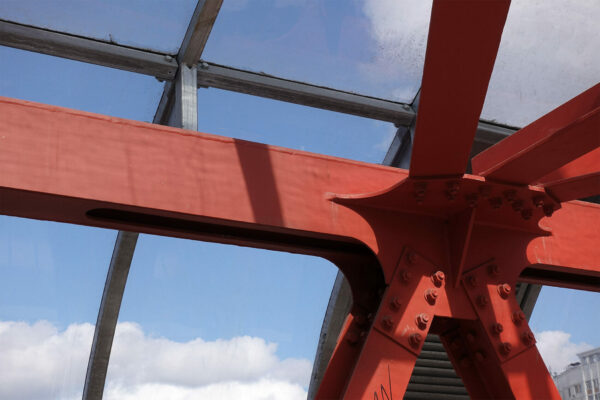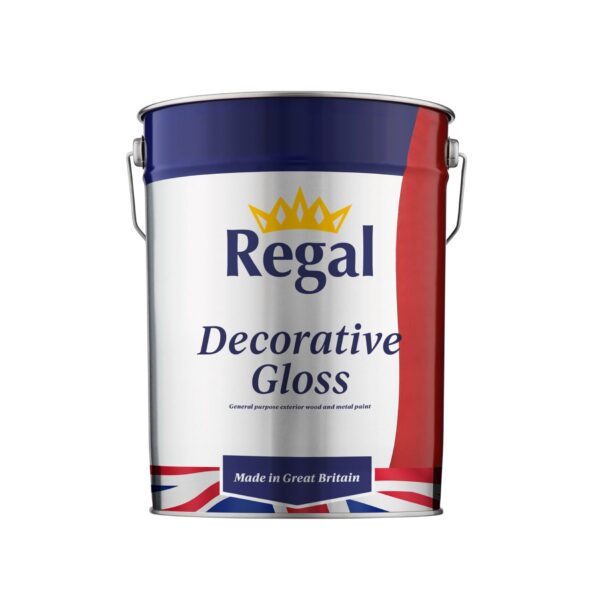
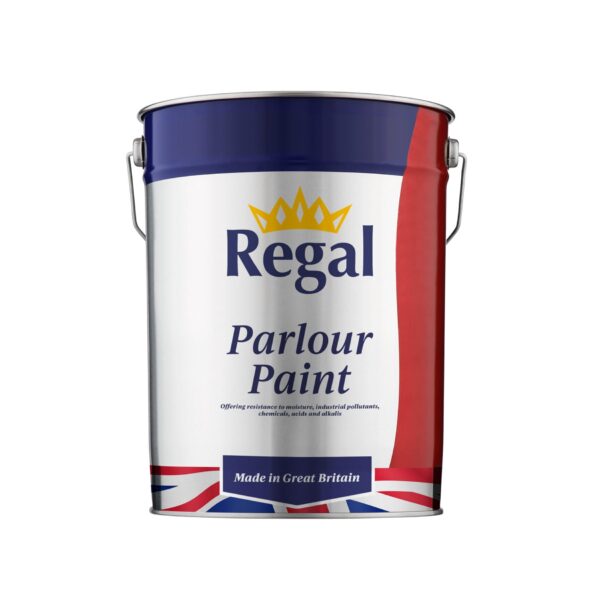
Agricultural Oxide
£34.50 – £78.00Price range: £34.50 through £78.00 ex VAT
Agricultural Oxide – A long oil based protective metal coating, suitable for all types of interior/exterior substrates. It has excellent covering power and can be used on block work, steel sheets, asbestos sheeting as well as wood. It has a good gloss finish, gives protection against weathering and corrosion.

BULK ORDERS? CALL 01782 550733 FOR DISCOUNTS!
Available Metal Paint Colours
*The colours of metal paints shown in this chart are approximate and may vary.
Agricultural Oxide – Product Description & Recommended Use
- A single-pack, quick-air-drying enamel topcoat with a tough, sheen finish.
- Made from high-quality synthetic resins and is lead and chrome-free.
- An easy to apply metal paint by airless spray, conventional spray or roller and brush.
- Suitable for direct-to-metal applications.
- Suitable for application to steel and non-ferrous metal, and heavy-duty industrial use.
- For higher temperatures, we recommend thin films to reduce the risk of thermal-shock cracks of the paint-film during heating and cooling cycles.
Agricultural Oxide – Reviews and Feedback
Leave a review
Read our customer reviews
Buyer: Bridget Fellows
Product: Agriculture Oxide
Date: 23 Feb 2019
Rating: 9/10
Very good product, great prompt service – would recommend this company.

Send us your photos...
We are always interested in seeing the finished job when we send out paints to our customers. Whether you have completed a domestic garage or a warehouse, it is always great to see "before and after" images showing what our products can do. If you have the time, please send out your photos (and anything else you would like to tell us about the project) to sales@regalpaints.co.uk. We would love to feature your projects on our website!
Regal Paint® - Metal Paint Manufacturers
Regal Paints® manufacture high performance metal paint for a range of industrial and commercial applications. These specialist paints include our two pack epoxy metal paints as well as our single pack metal paints like Aluminium Quick Dry Enamel, Decorative Gloss, One Coat Steel Enamel, Quick Drying Gloss Enamel, and Skip and Container paint. Our paints are also available in a versatile range of colours, including old favourites like red oxide primer and red oxide paint as we well as modern staples like black metal paint and grey metal paint. All of the Regal range of metal primers and topcoats are formulated to provide the very best possible protection on a wide range of substrates. We continue to supply our paints to many new and long-standing customers in the engineering, agricultural, construction and trade sectors and are able to formulate and supply bespoke solutions and manufacture to your RAL (quantity dependent). In addition to our range of metal paint products, Regal Paints provide a comprehensive selection of floor paint, masonry paint and timber paint as well as paints for specialist applications.
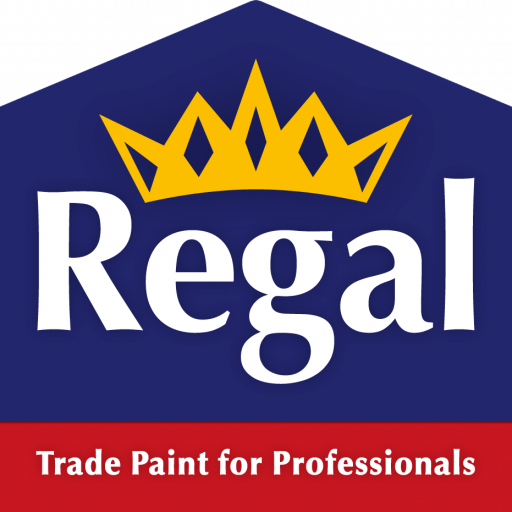
| Weight | N/A |
|---|---|
| Select Colour |
Brunswick Green ,Ford Tractor Blue ,Cornflower Blue ,Red Oxide ,Post Office Red ,Caterpillar Yellow ,JCB Yellow ,Chocolate Brown ,Bright Orange ,Slate Grey ,Light Grey ,Black ,White |
| Select Size |
5 Litres ,20 Litres |
FAQs
FAQ High Build Phosphate Quick Dry Primer
Over the years there has been a lot of misinformation provided concerning red oxide, primarily due to its widespread use in red oxide primers where its principal application is to camouflage rust creeping through from the steel underneath. Red oxide is actually the common name for iron III oxide (Fe203) which in colour and chemically is very similar to the hydrated iron oxide (rust) which hides any early signs of rust. Red iron oxide when purified and sold as a pigment for use in paint and ceramics has the advantage of being stable having already oxidised and so resistant to further oxidation and heat changes at most temperature found in common applications. It is also hard and very resistant to mechanical damage. All of these characteristics have led to its widespread use in primer paints or direct to metal paints for iron and steel for many decades. However, unless combined with an active pigment, usually a phosphate to protect the steel there is little actual protection provided by the red iron oxide other than as barrier and here it is often confused with a more effective form of barrier coating based in micaceous iron oxide which is another form entirely and uses its lamellar plate like structure to provide some physical barrier to the penetration of water and oxygen, both of these are needed for corrosion to take place.
Corrosion is an electrochemical process, very much like a battery in which the iron in steel is oxidised by losing electrons to become positively charged iron ions:
Fe » Fe2+ + 2e-
The electrons produced by this reaction combine with hydrogen ions in the water as well as with dissolved oxygen to produce water:
The formation of rust requires iron, water and oxygen. Although it’s a complex process, the chemical equation is simply:
4Fe + 3O2 + 6H2O → 4Fe(OH)3.
The First Step: Oxidation of Solid Iron
It’s common knowledge that rust occurs when you leave water on a metal implement or you leave it exposed to moist air. That’s because the first step in the rusting process involves the dissolution of solid iron into solution. The formula for this is:
Fe(s) → Fe2+(aq) + 2e-
The electrons produced by this reaction combine with hydrogen ions in the water as well as with dissolved oxygen to produce water:
4e- + 4H+(aq) + O2(aq) → 2H2O(l)
The consumption of hydrogen ions that occurs as iron dissolves leaves a preponderance of hydroxide (OH-) ions in the water. The iron(II) ions react with them to form green rust:
Fe2+(aq) + 2OH–(aq) → Fe(OH)2(s)
BUT that isn’t the end of the story. The iron(II) ions also combine with hydrogen and oxygen in the water to produce iron(III) ions:
4Fe2+(aq) + 4H+(aq) + O2(aq) → 4Fe3+(aq) + 2H2O(l)
These iron ions are the source of the reddish deposit that gradually eats holes in all corroding steel and iron from car bodywork to metal roofing to farm ironwork. They combine with the extra hydroxide ions to form iron(III) hydroxide:
Fe3+(aq) + 3OH–(aq) → Fe(OH)3
This compound dehydrates to become Fe2O3.H2O, which is the chemical formula for rust. Note how similar it is t the chemical formula for Red iron oxide pigment Fe2O3 and this is why red iron oxide paints help to camouflage but do not prevent corrosion when used as red iron oxide primers or paints – for that you need a pigment that actively prevents corrosion such as Nanoguard ACP
Anti corrosive pigments? What are they? Here we try to give a simple explanation.
Over the years, many products have been used (to a greater or lesser degree of success) in the prevention of corrosion, often together with red oxide to produce a red oxide metal primer.
The purpose of primer paints is to act as preparation, forming part of the protective coating for the underlying metal and inhibiting rust formation.
In the past, toxic pigments such as red lead, and carcinogenic pigments such as chromates, have been used. However, due to health concerns they were replaced largely by zinc phosphate. In turn, this old technology was found to be very bad for the environment leading to its replacement by zinc-free systems, replacing the harmful heavy metal zinc with the friendly metal calcium. Since calcium phosphates are widely found in our bodies there are no harmful effects on either human health or the environment from this technology and so modern formulations tend to be zinc-free.
Early versions of zinc-free anti-corrosives first appeared in the late 1980’s when BP became concerned about the leaching of heavy metals and things like zinc-based paints into the sea from their oil rigs. This earlier technology, based on calcium ion exchanged silica, has gradually been superseded by a variety of calcium-phosphate based products such as Nanoguard ACP DCP and Nanoguard ACP2 (used to replace carcinogenic chromates).
Formulation of metal protection products, including direct-to-metal products such as the traditional hammer-finish paints and epoxy coatings, now widely use calcium-phosphate to protect metalwork. With a pedigree developed for the harsh environment of the North Sea oil fields these zinc-free phosphates continue to provide longevity to steel structures around the world without damaging the environment or our health.
Here at Industrial Protective Paints Ltd, all of our products that require anticorrosive properties, for example Regal Anticorrosive Primers and Regal Skip and Container Paint, are manufactured using calcium-phosphate technology.
FAQ Skip and Container Paint
If you are painting bare metal, we would always recommend the use of an undercoat or primer coat first. Regal Skip and Container Paint is made with extra anticorrosive materials, more than regular metal enamel so does give more corrosion protection. This is designed for quickly overspraying existing skip paint or container paint as we know our customers need a speedy turnaround. Our primer paint is designed for bare metal or spot priming, creating an anchor between the metal and the metal paint. So yes, ideally use our red oxide primer or grey oxide primer to undercoat bare metal. Always prepare the surface thoroughly prior to painting.
Regal Skip and Container Paint is manufactured with the addition of calcium phosphate. This gives added protection against metal corrosion. Regal Quick Drying Gloss Enamel doesn’t contain calcium phosphate and is a topcoat enamel.
The Skip and Container Paint can be used alone as an overspray to tidy up painted skips and containers. If used in combination with Regal Anticorrosive Phosphate Primer, there will be an additional level of protection.
Always try to remove rust prior to painting and spot prime if needed.
We make our Skip and Container Paint on a xylene thinner. If you do need to thin back the paint, you can use a standard cellulose thinner. Please do not under any circumstance use a white spirit. Cellulose thinner is a standard thinner for paint and can be found in most DIY stores such as B&Q. We do sell standard cellulose thinner in both 5 litre and 25 litre options – if you would like to add some to your order, please call us on 01782 550733.
Skip Paint is manufactured with the customer in mind. Understanding our market is key and it was in fact Regal Paint who spotted the gap for a product called Skip and Container Paint. In the days BI (Before Internet) we would advertise to skip companies through the paper copy of Industrial Exchange and Mart, selling red oxide primer and onecoat enamel. Realising that speed is of the essence, we started to make a specific product combining the anticorrosive properties of primer with the durability of enamel. Use our skip paint to freshen up the inside or outside of regular skips, enclosed bins, roll on roll off skip containers and to also paint shipping containers. Durable, quick-drying, full of anticorrosive properties, and easy to apply. Regal Skip and Container Paint is the original and the best.
Floor Paint FAQs
Whilst newly laid concrete slab can look dry and it can also feel dry to touch, it may actually still contain water. We would recommend that you wait to paint new concrete until it has dried for 1 month per 1-inch depth of the concrete slab. So, for a newly laid concrete block of 6 inches in depth, we would recommend waiting for at least 6 months until painting.

WE AIM TO DISPATCH ORDERS RECEIVED PRE-NOON ON THE SAME DAY (STOCK DEPENDENT)
ALL ORDERS SENT ON A NEXT WORKING-DAY SERVICE
FREE DELIVERY ON ALL ORDERS OVER £300*
*£300 NET. Excludes surcharge areas - delivery surcharge will still apply.

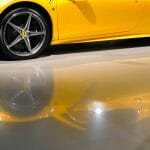
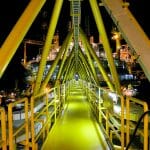
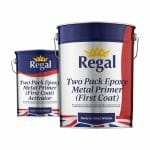 Epoxy Primer
Epoxy Primer
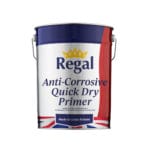 Anticorrosive High Build Phosphate Quick Dry Primer
Anticorrosive High Build Phosphate Quick Dry Primer
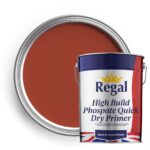 Red Oxide Primer and Paint
Red Oxide Primer and Paint
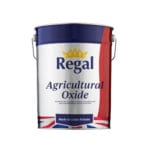 Agriculture Oxide (Barn Paint)
Agriculture Oxide (Barn Paint)
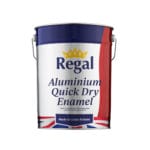 Aluminium Quick Dry Enamel
Aluminium Quick Dry Enamel
 Decorative Gloss
Decorative Gloss
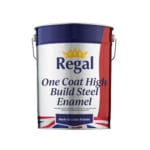 One Coat Steel Enamel
One Coat Steel Enamel
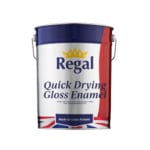 Quick Drying Gloss Enamel
Quick Drying Gloss Enamel
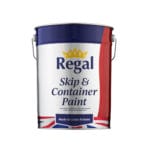 Skip Paint / Container Paint
Skip Paint / Container Paint
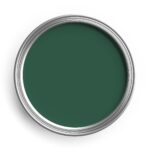 Brunswick Green Metal Paints
Brunswick Green Metal Paints
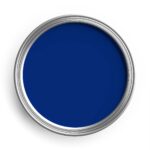 Ford Tractor Blue Metal Paints
Ford Tractor Blue Metal Paints
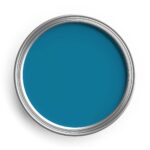 Cornflower Blue Metal Paints
Cornflower Blue Metal Paints
 Red Oxide Metal Paints
Red Oxide Metal Paints
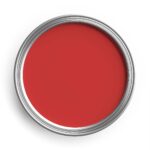 Post Office Red Metal Paints
Post Office Red Metal Paints
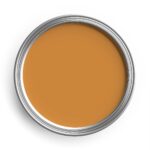 Caterpillar Yellow Metal Paints
Caterpillar Yellow Metal Paints
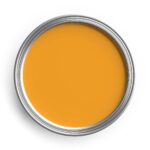 JCB Yellow Metal Paints
JCB Yellow Metal Paints
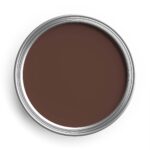 Chocolate Brown Metal Paints
Chocolate Brown Metal Paints
 Bright Orange Metal Paints
Bright Orange Metal Paints
 Slate Grey Metal Paints
Slate Grey Metal Paints
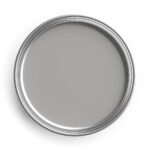 Light Grey Metal Paints
Light Grey Metal Paints
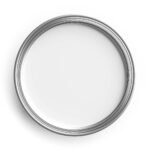 White Metal Paints
White Metal Paints
 Black Metal Paints
Black Metal Paints



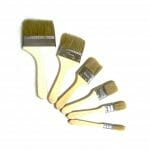 Disposable Paint Brushes
Disposable Paint Brushes
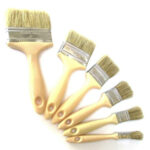 Standard Paint Brushes
Standard Paint Brushes
 Floor Roller Sleeves
Floor Roller Sleeves
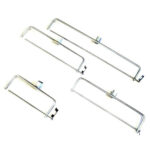 Floor Roller Frames
Floor Roller Frames
 Spiked Overshoes
Spiked Overshoes
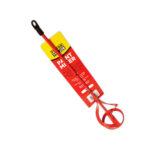 Mixer Paddles
Mixer Paddles
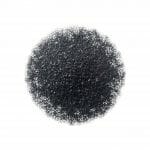 Anti-Slip Additives
Anti-Slip Additives
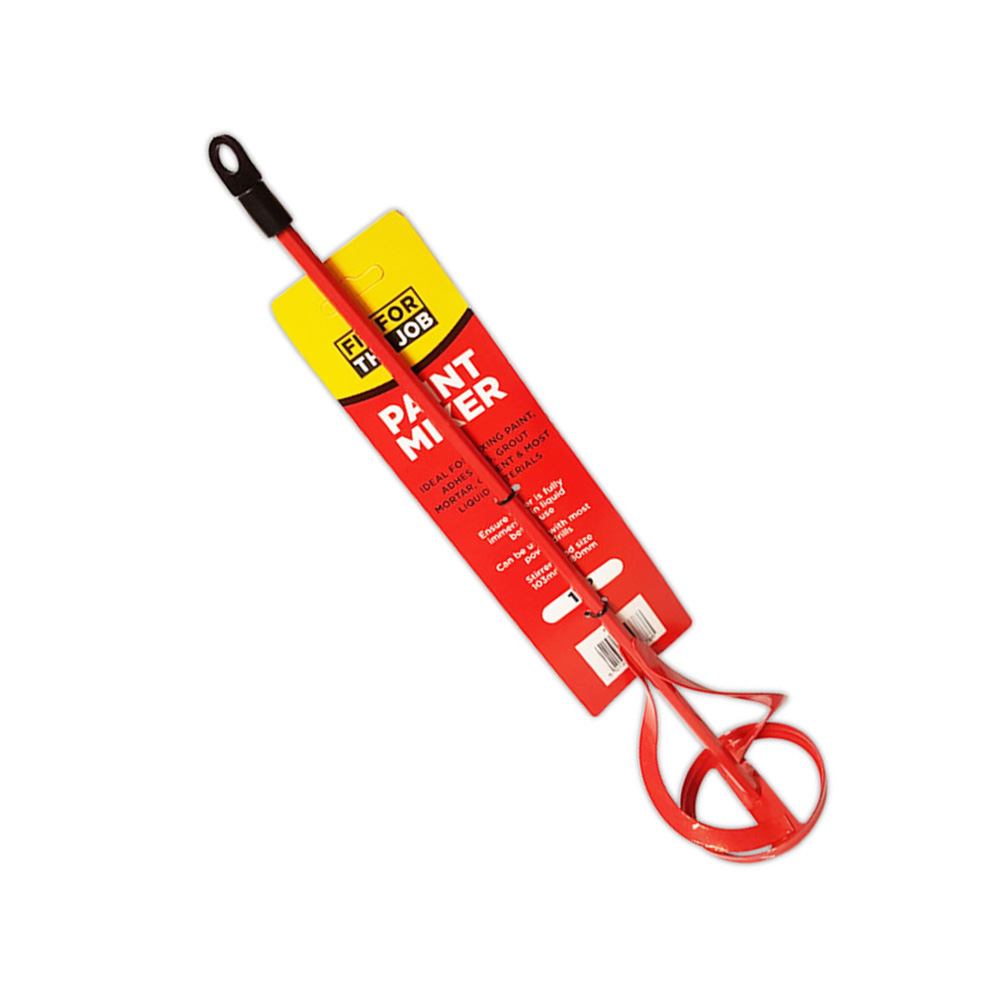
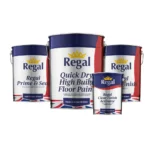

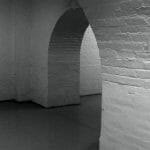 Basement Floor Paint
Basement Floor Paint
 Barn Paint
Barn Paint
 Catteries Paint
Catteries Paint
 Car Park Paint
Car Park Paint
 Commercial Kitchen Paint
Commercial Kitchen Paint
 Concrete Floor Paint
Concrete Floor Paint
 Corridor Paint
Corridor Paint
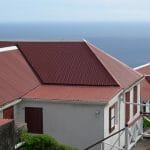 Corrugated Iron Paint
Corrugated Iron Paint
 Dog Kennel Floor Paint
Dog Kennel Floor Paint
 Gallery Floor Paint
Gallery Floor Paint
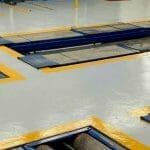 Garage Floor Paint
Garage Floor Paint
 Heavy Traffic Area Paint
Heavy Traffic Area Paint
 Hospitals Paint
Hospitals Paint
 Laundry Room Paint
Laundry Room Paint
 Line Marking Paint
Line Marking Paint
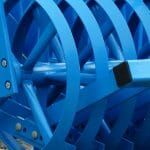 Machinery Paint
Machinery Paint
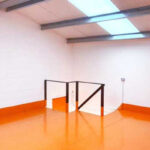 Mezzanine Floor Paint
Mezzanine Floor Paint
 Museums Paint
Museums Paint
 Oil Rigs Paint
Oil Rigs Paint
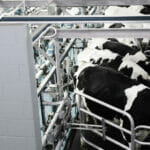 Parlour Paint
Parlour Paint
 Plywood Paint / MDF Paint
Plywood Paint / MDF Paint
 Restaurant Paint
Restaurant Paint
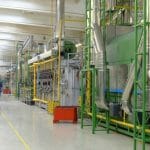 Shop Floor Paint
Shop Floor Paint
 Shipping Containers Paint
Shipping Containers Paint
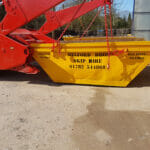 Skip Paint / Container Paint
Skip Paint / Container Paint
 Stable Paint
Stable Paint
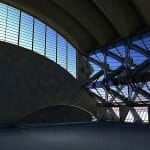 Stadium Floor Paint
Stadium Floor Paint
 Steel Bridge Paint
Steel Bridge Paint
 Storage Room Paint
Storage Room Paint
 Studio Floor Paint
Studio Floor Paint
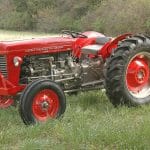 Tractors Paint
Tractors Paint
 Trailer Paint
Trailer Paint
 Warehouse Floor Paint
Warehouse Floor Paint
 Walkways Paint
Walkways Paint




